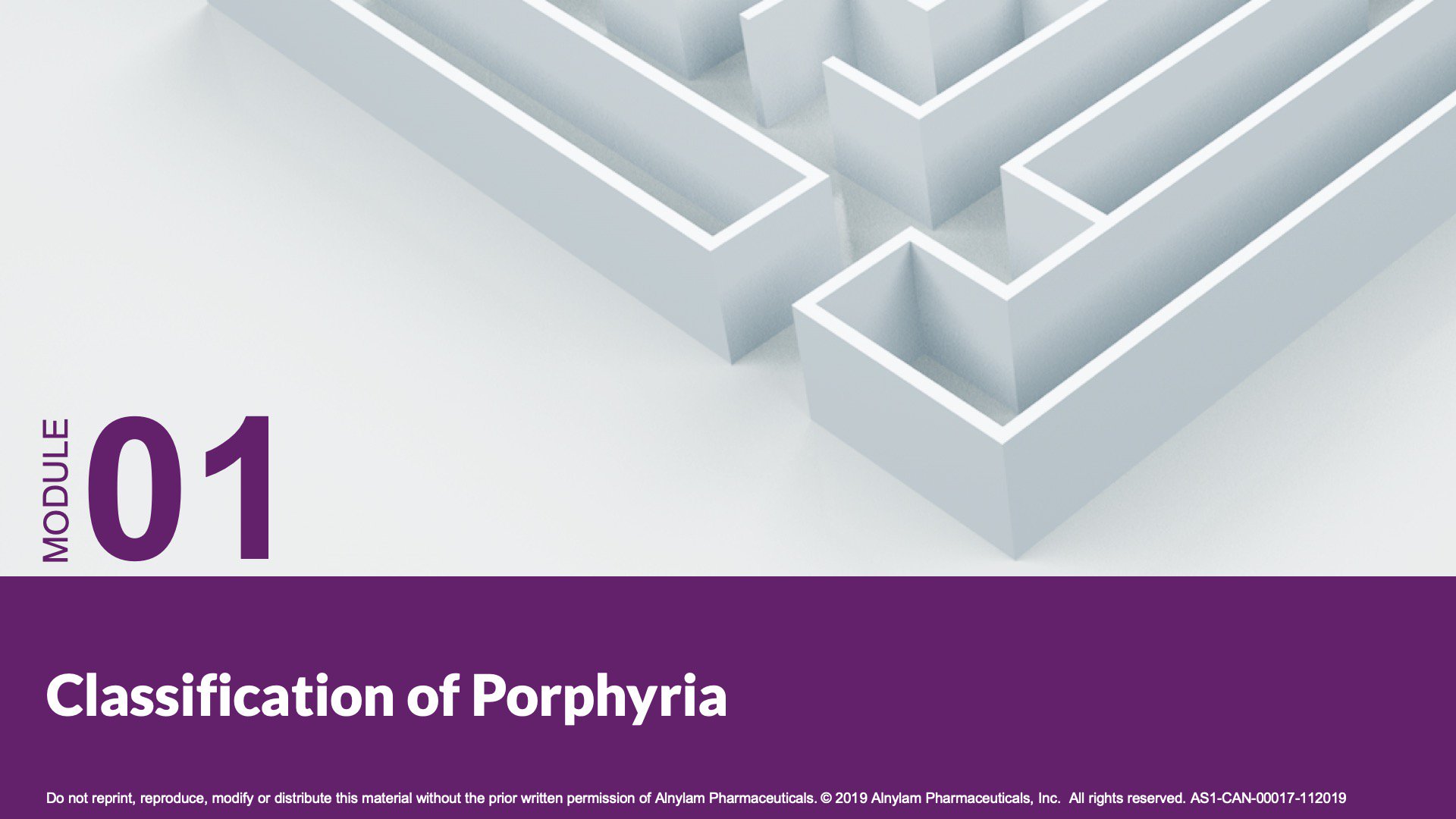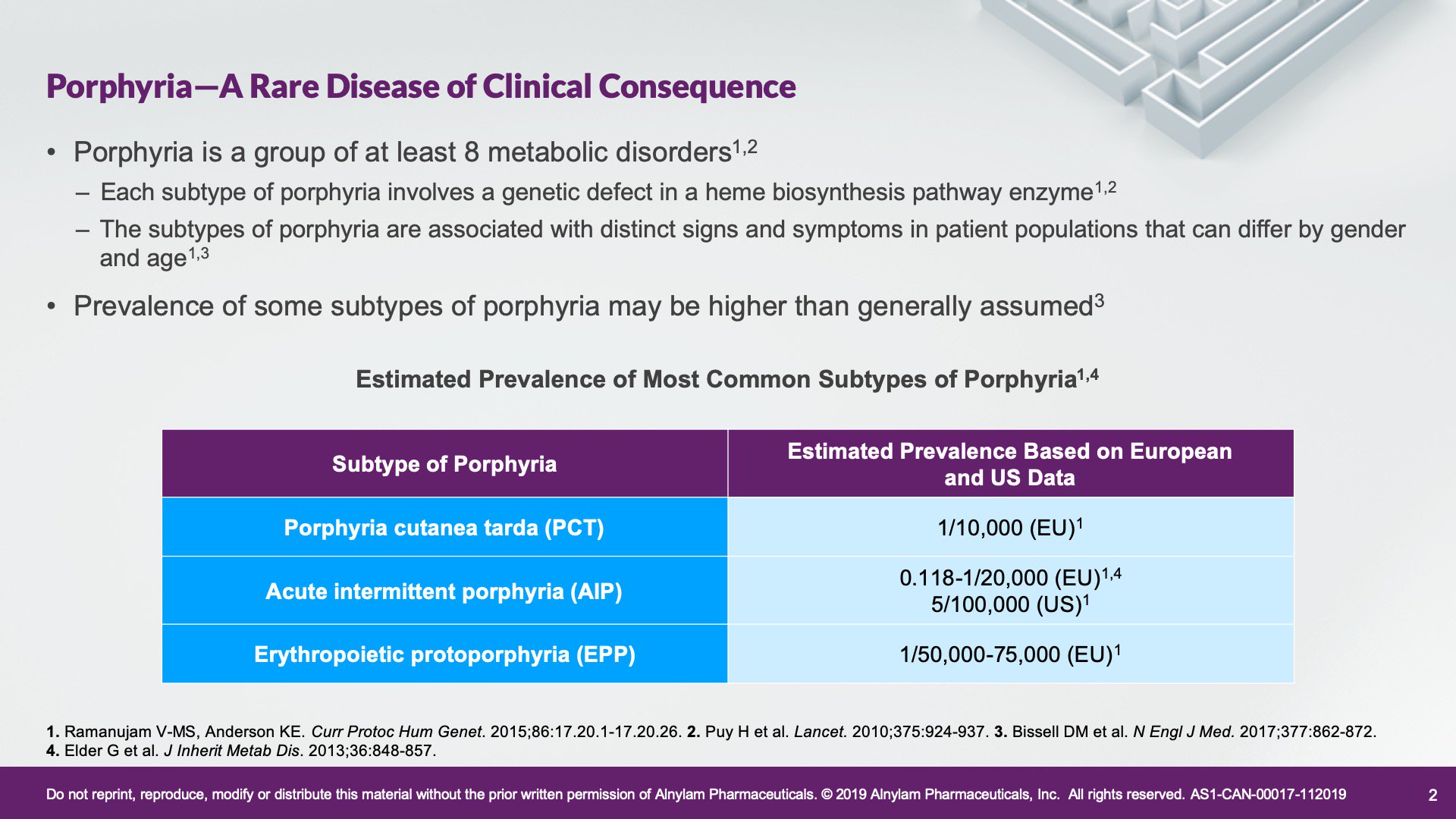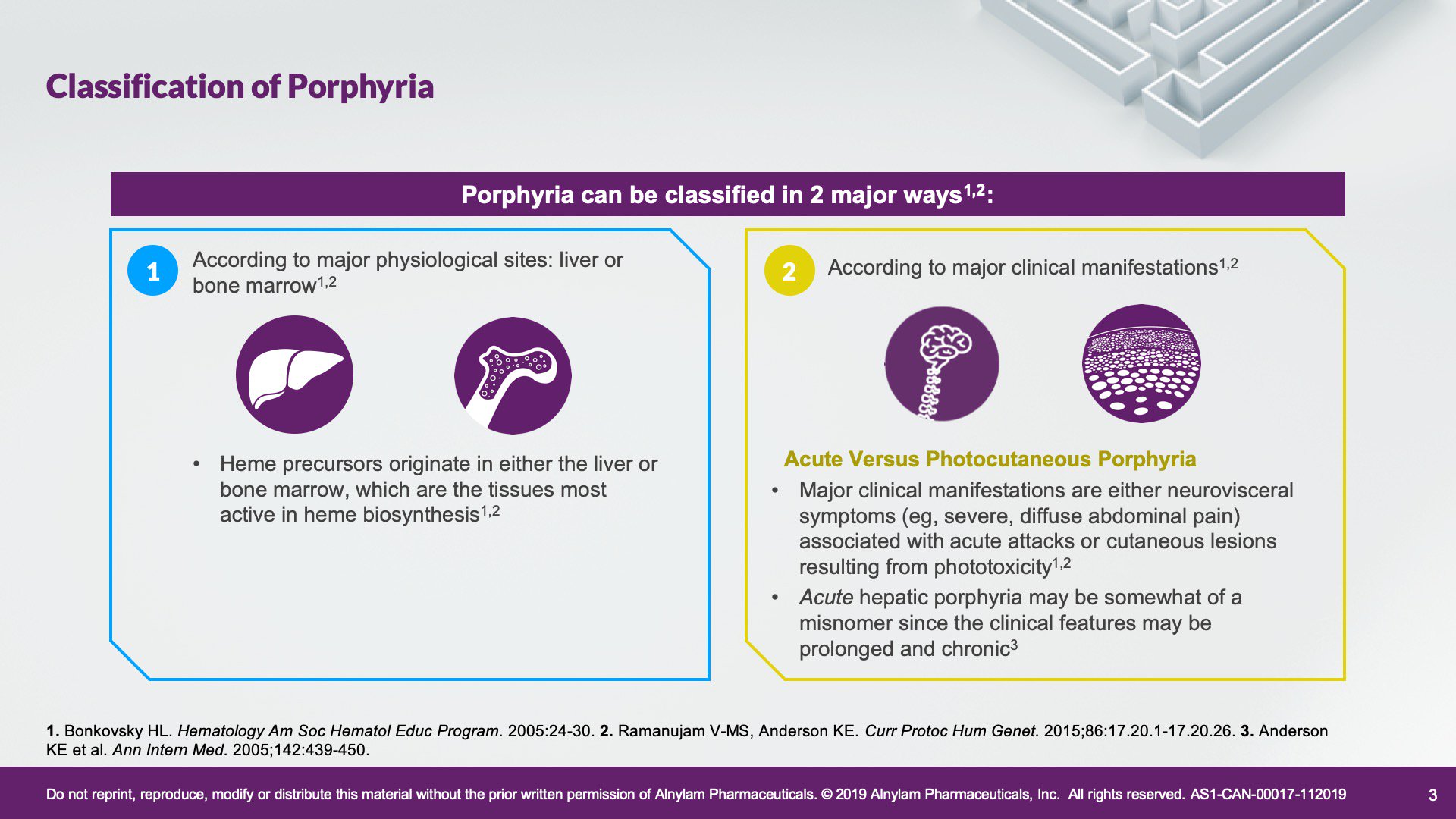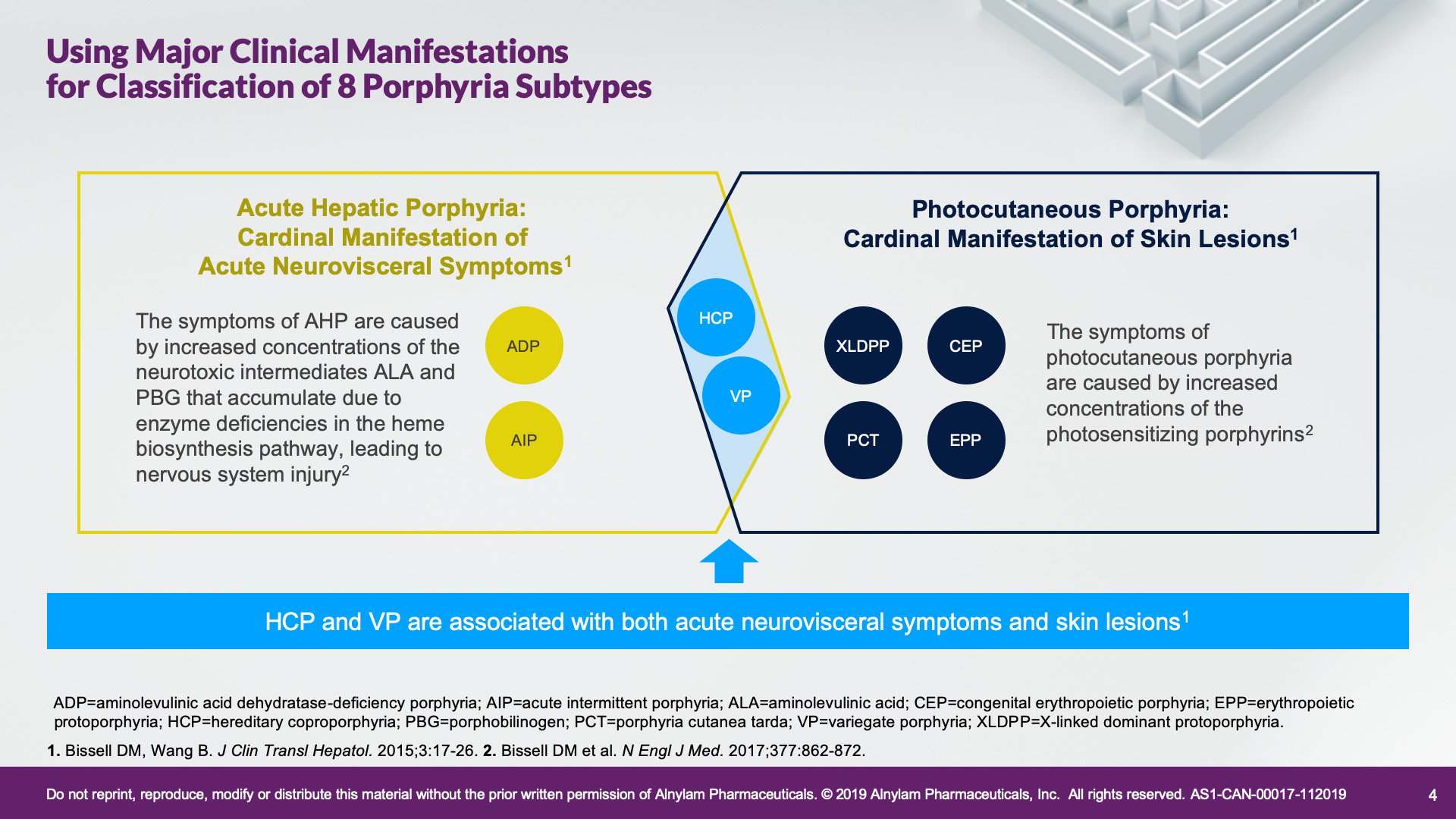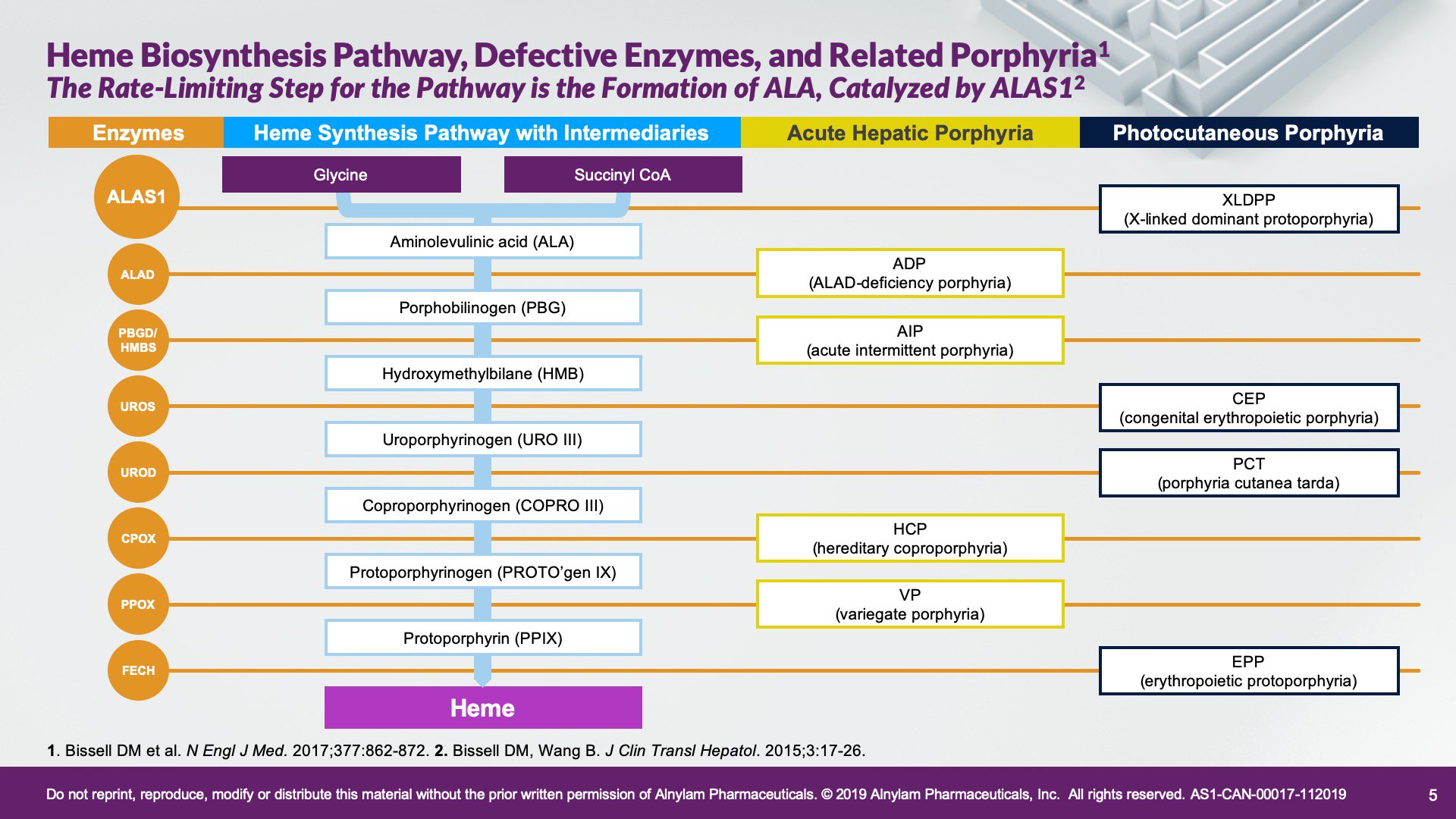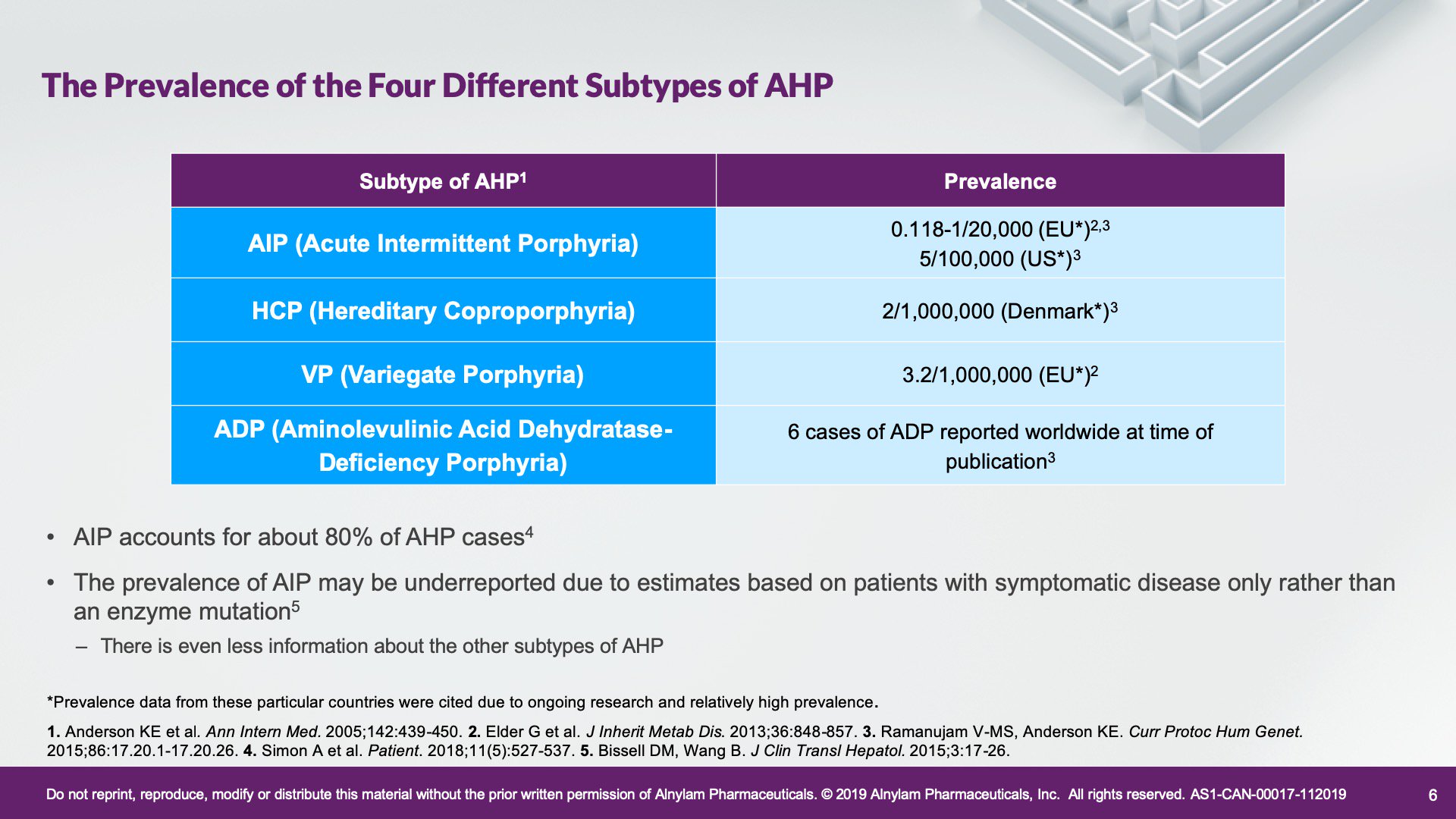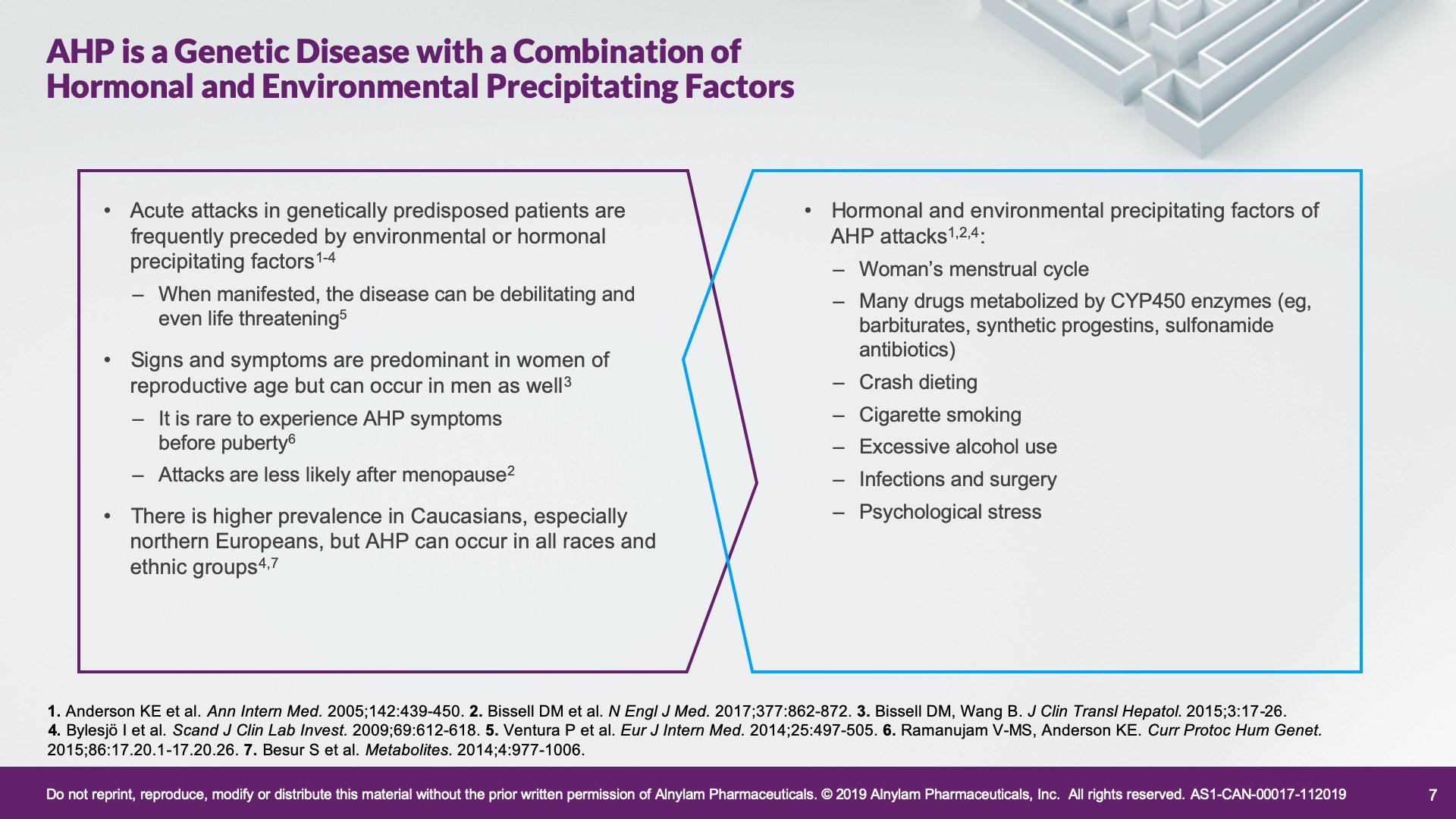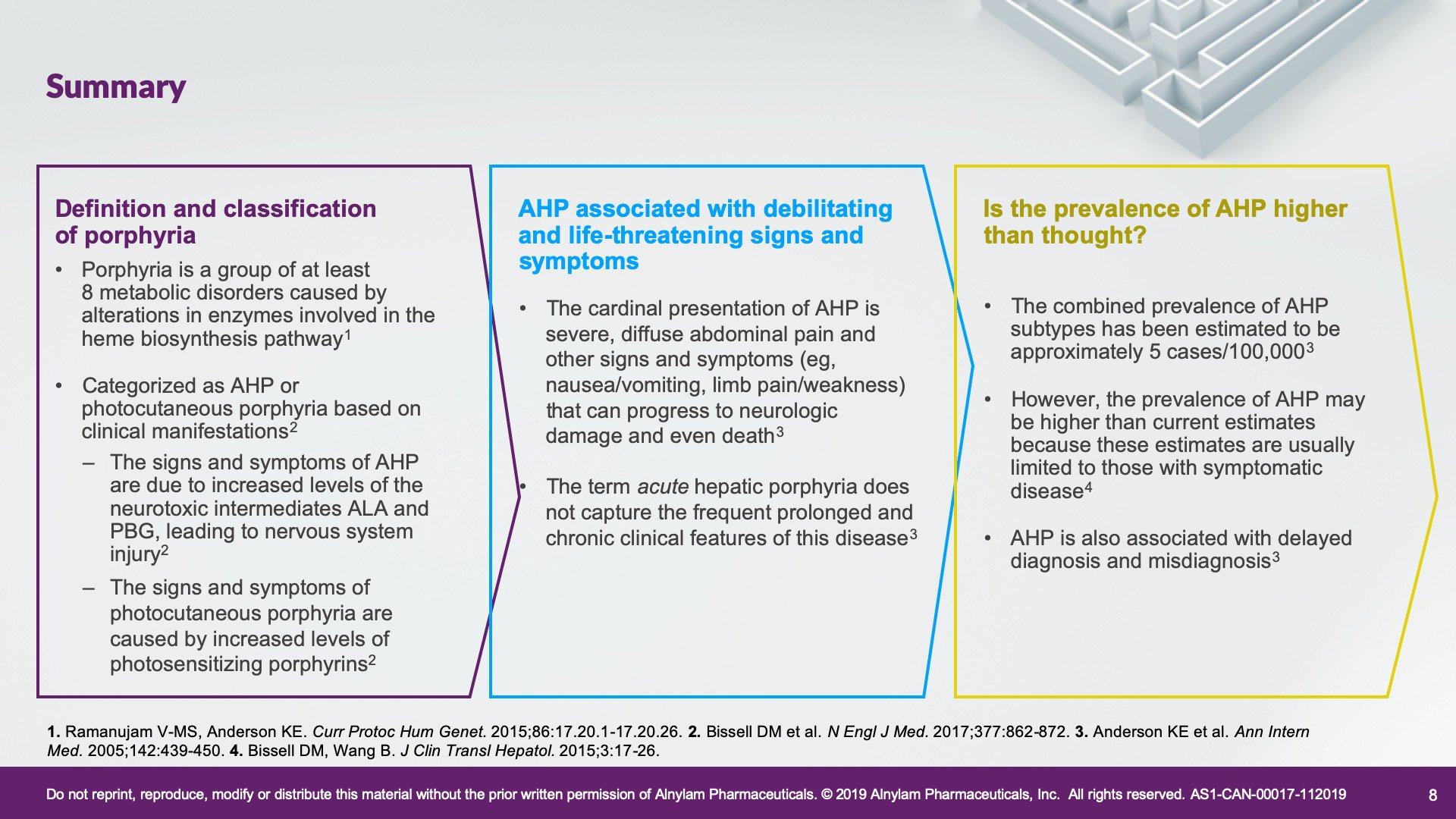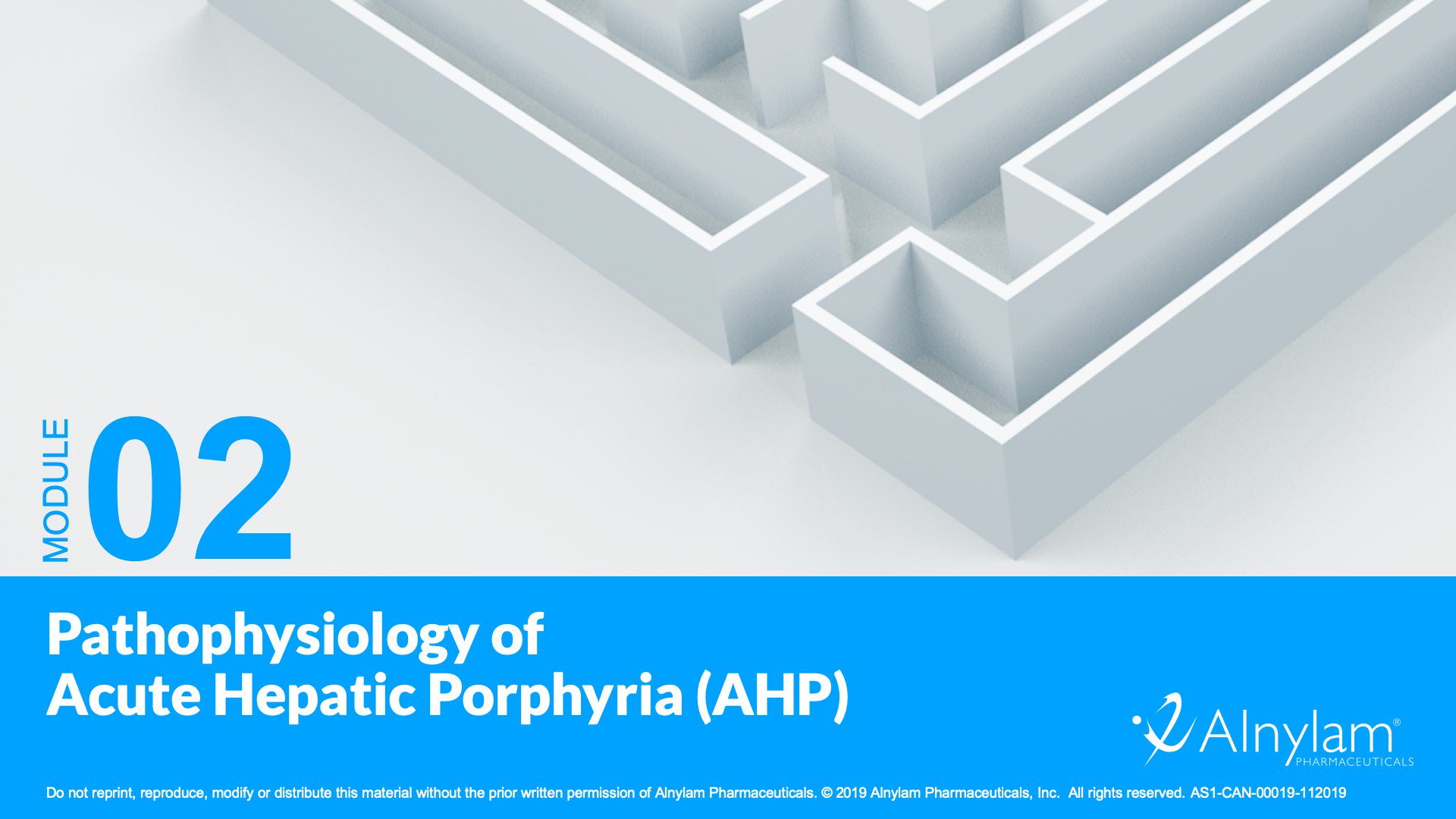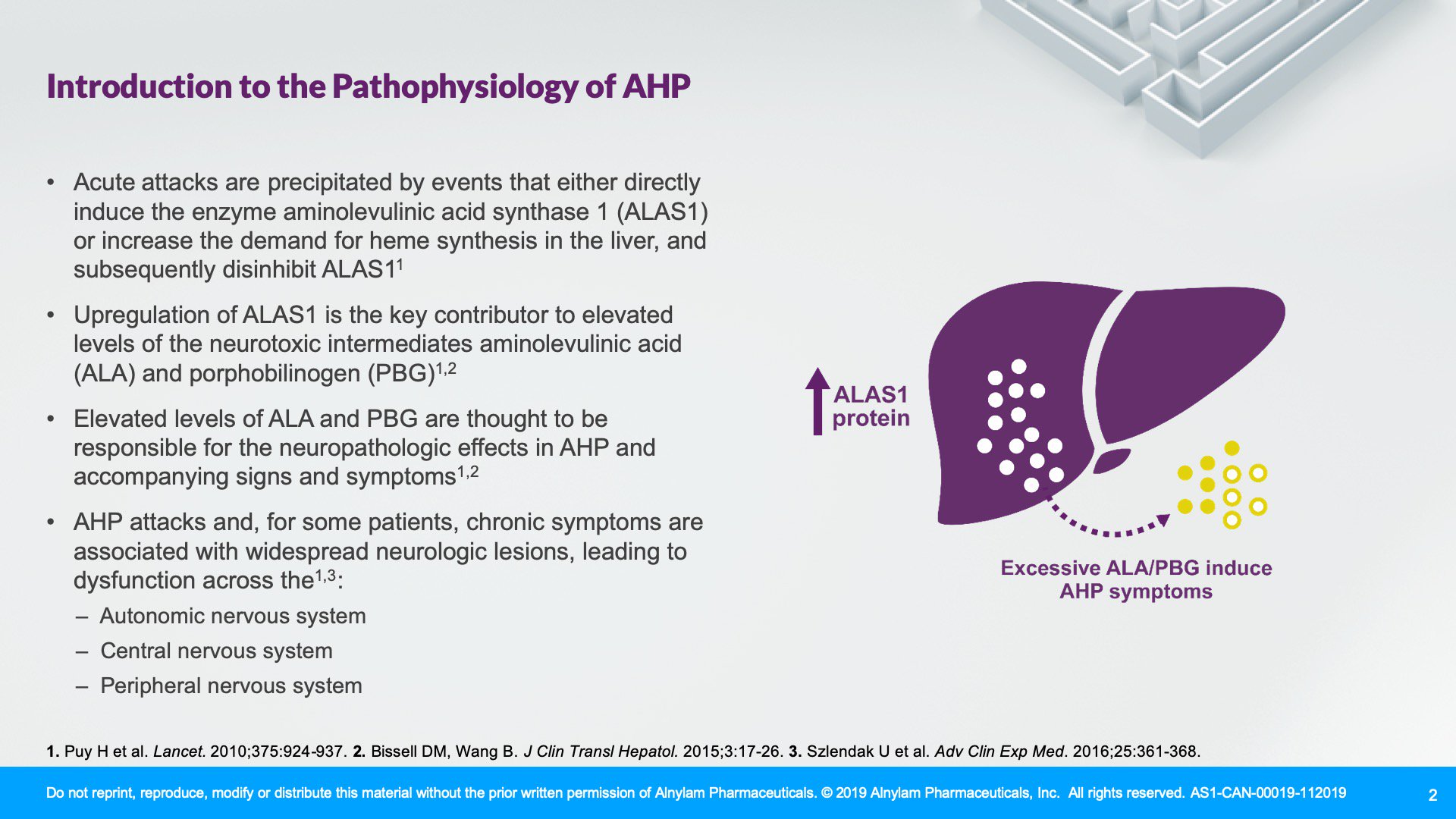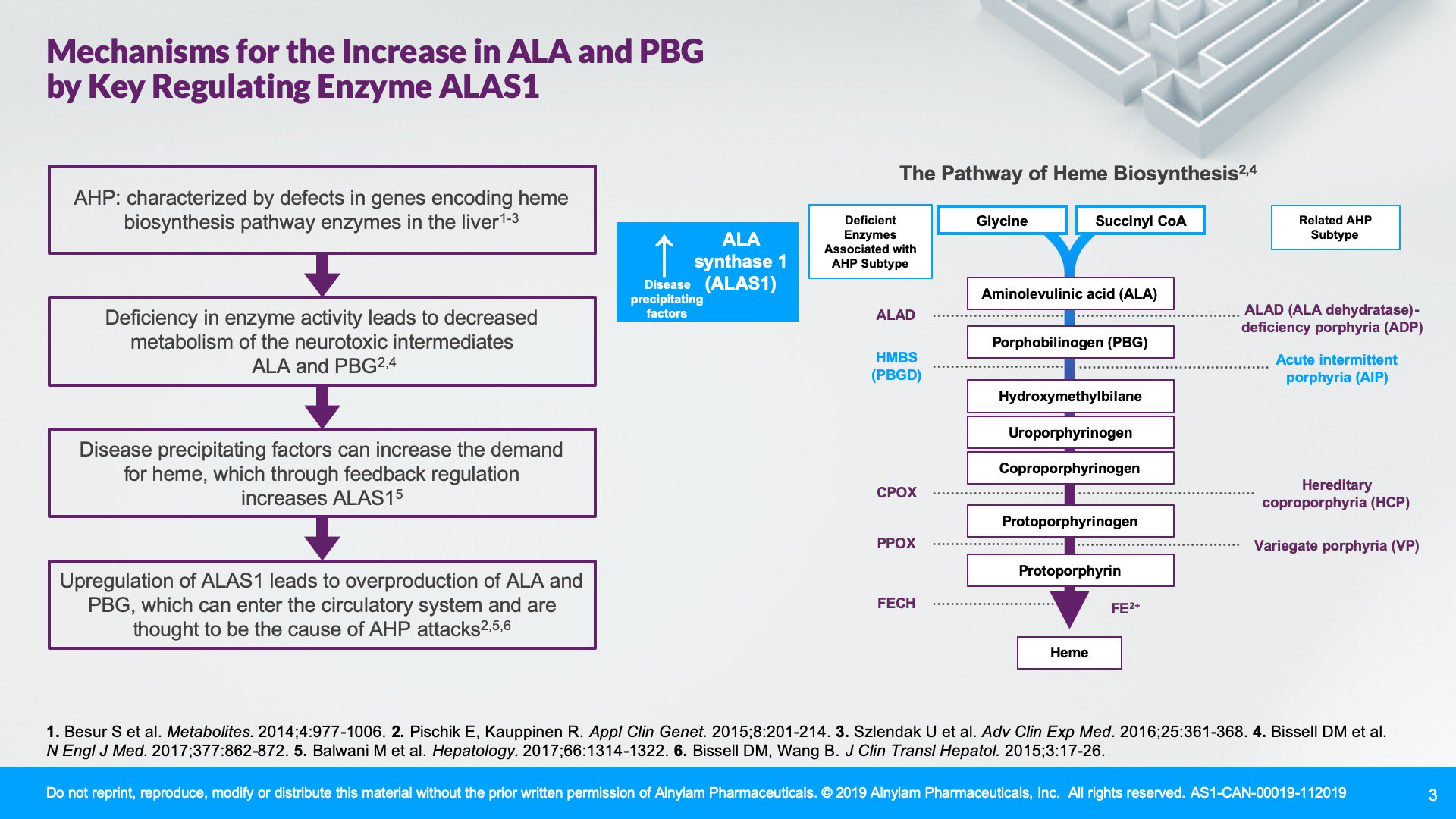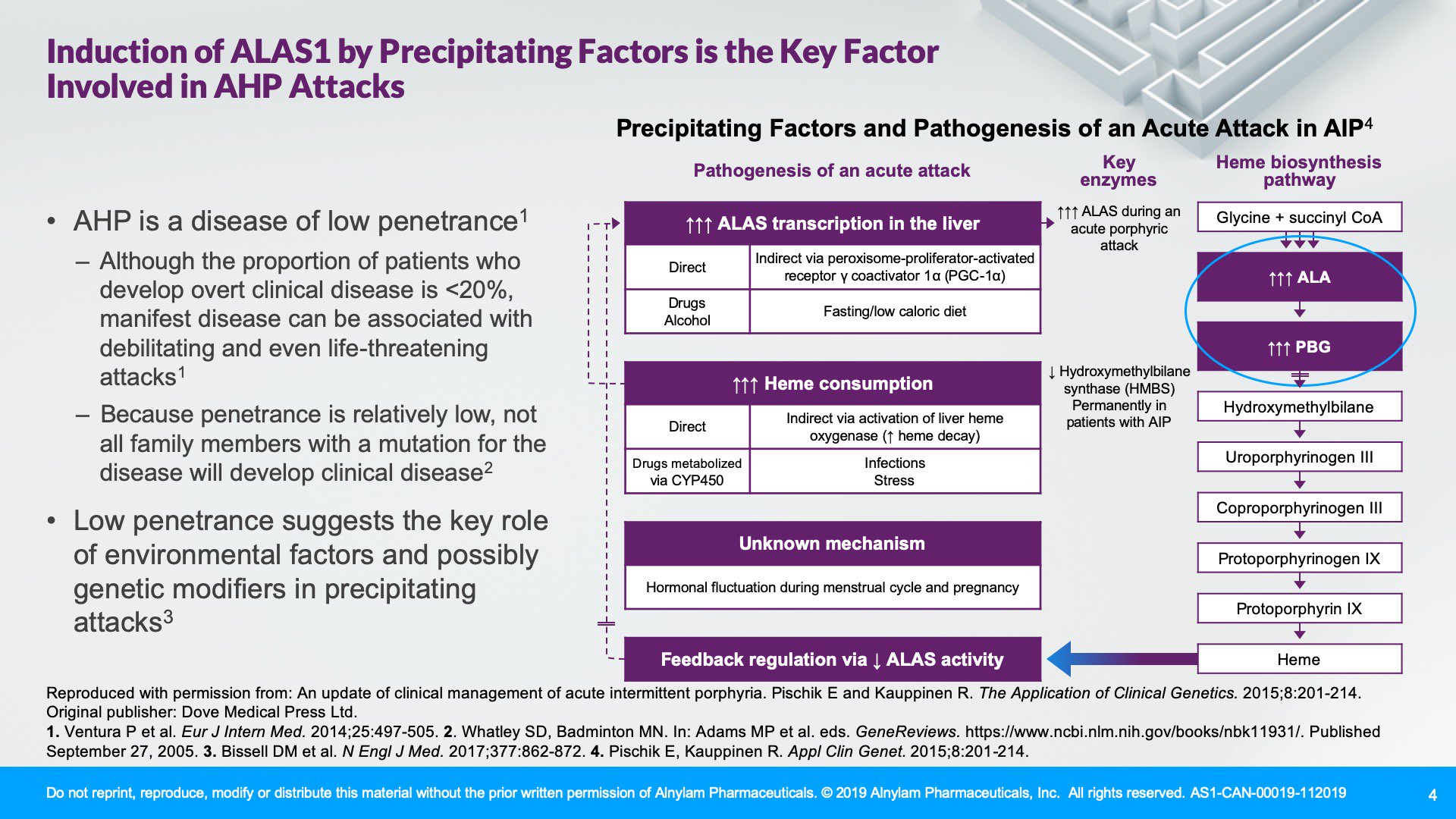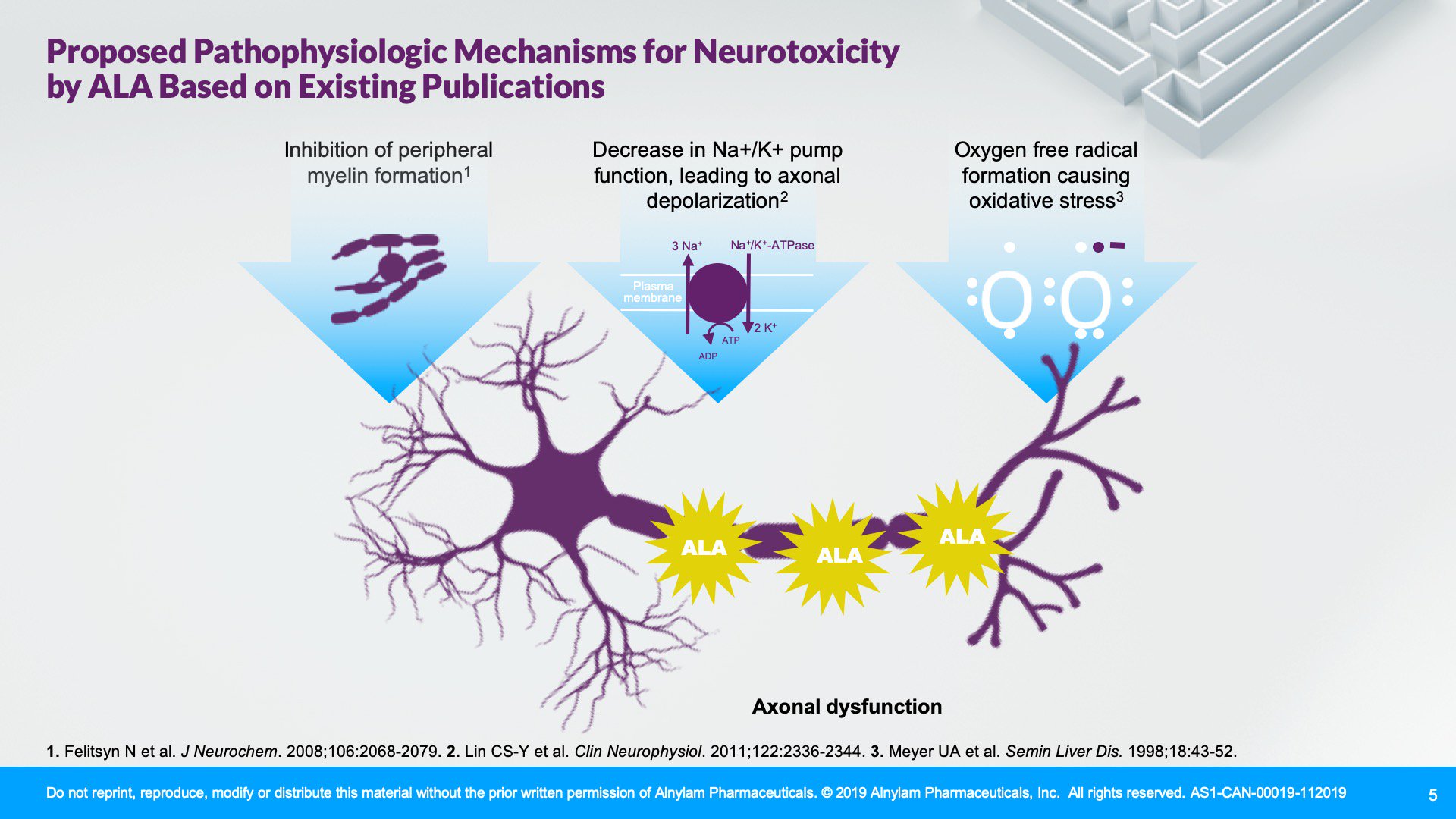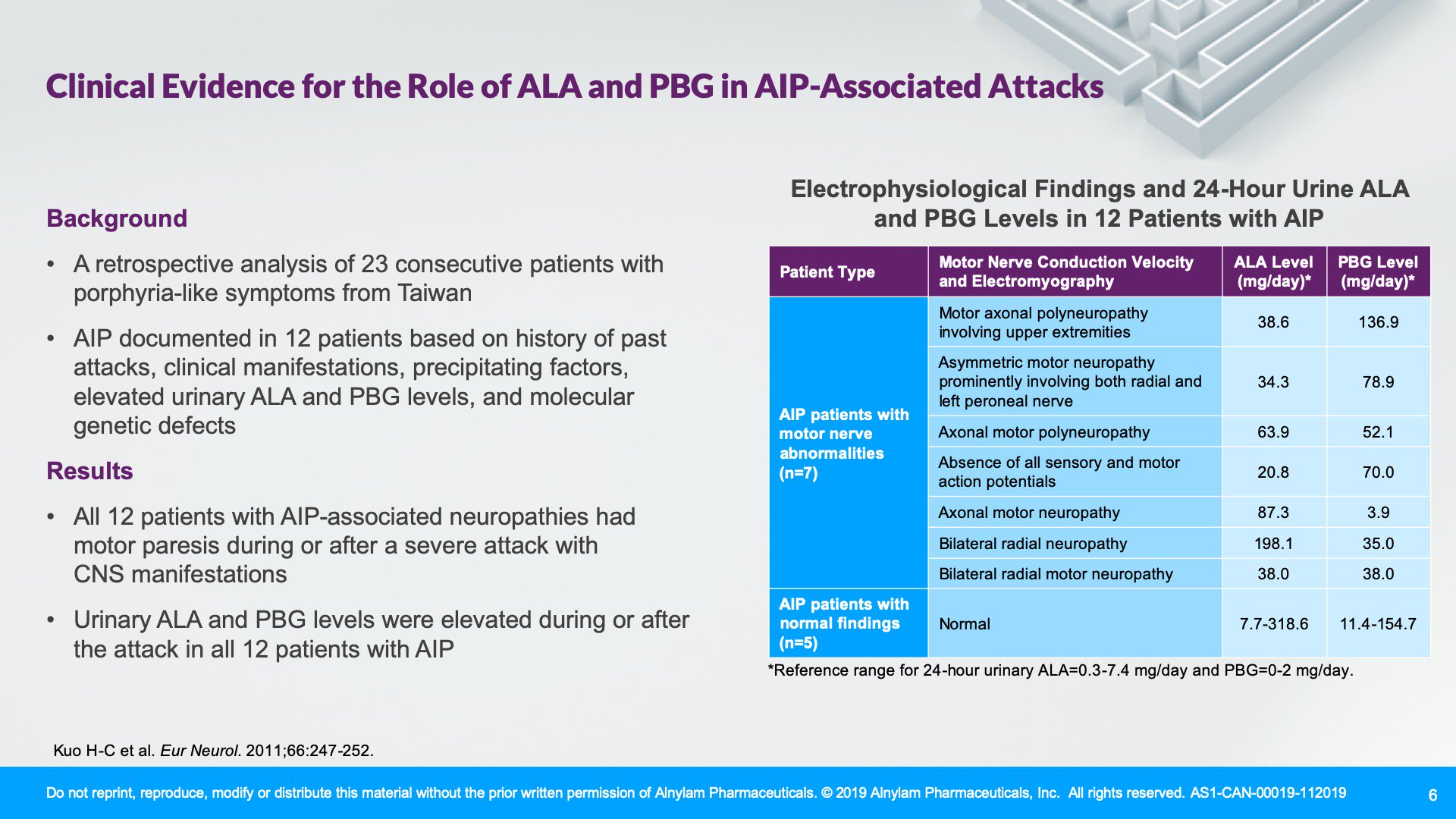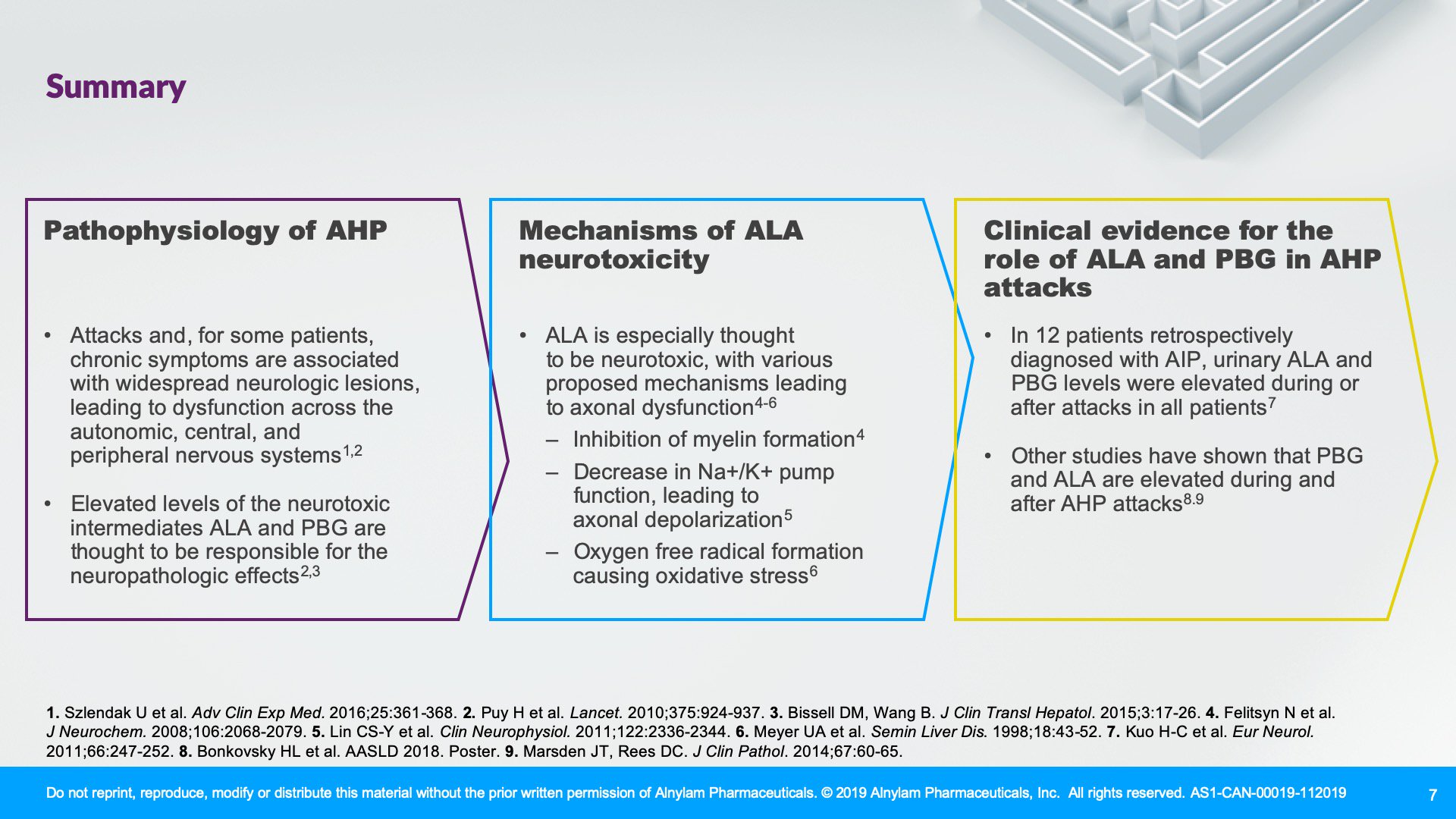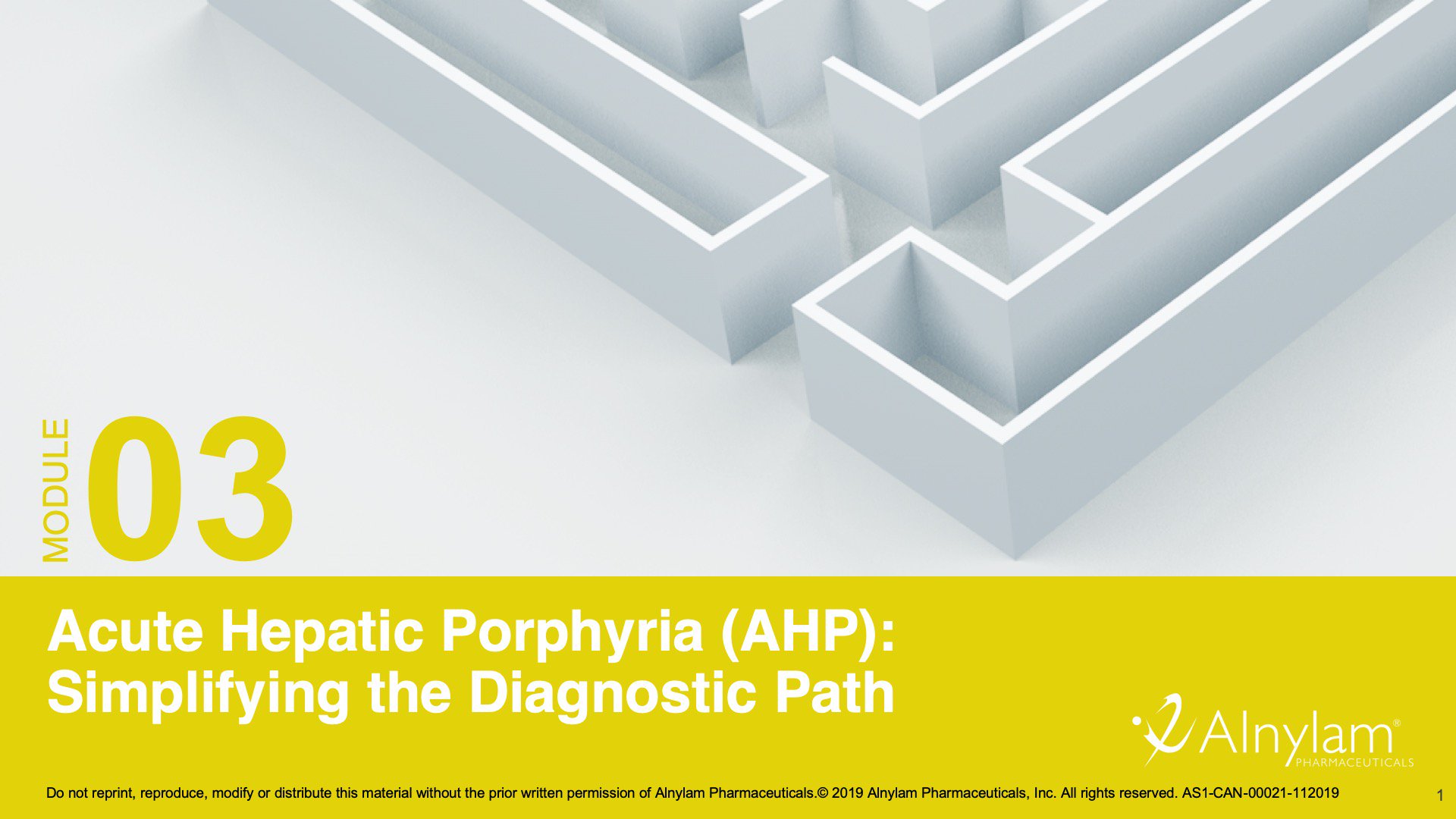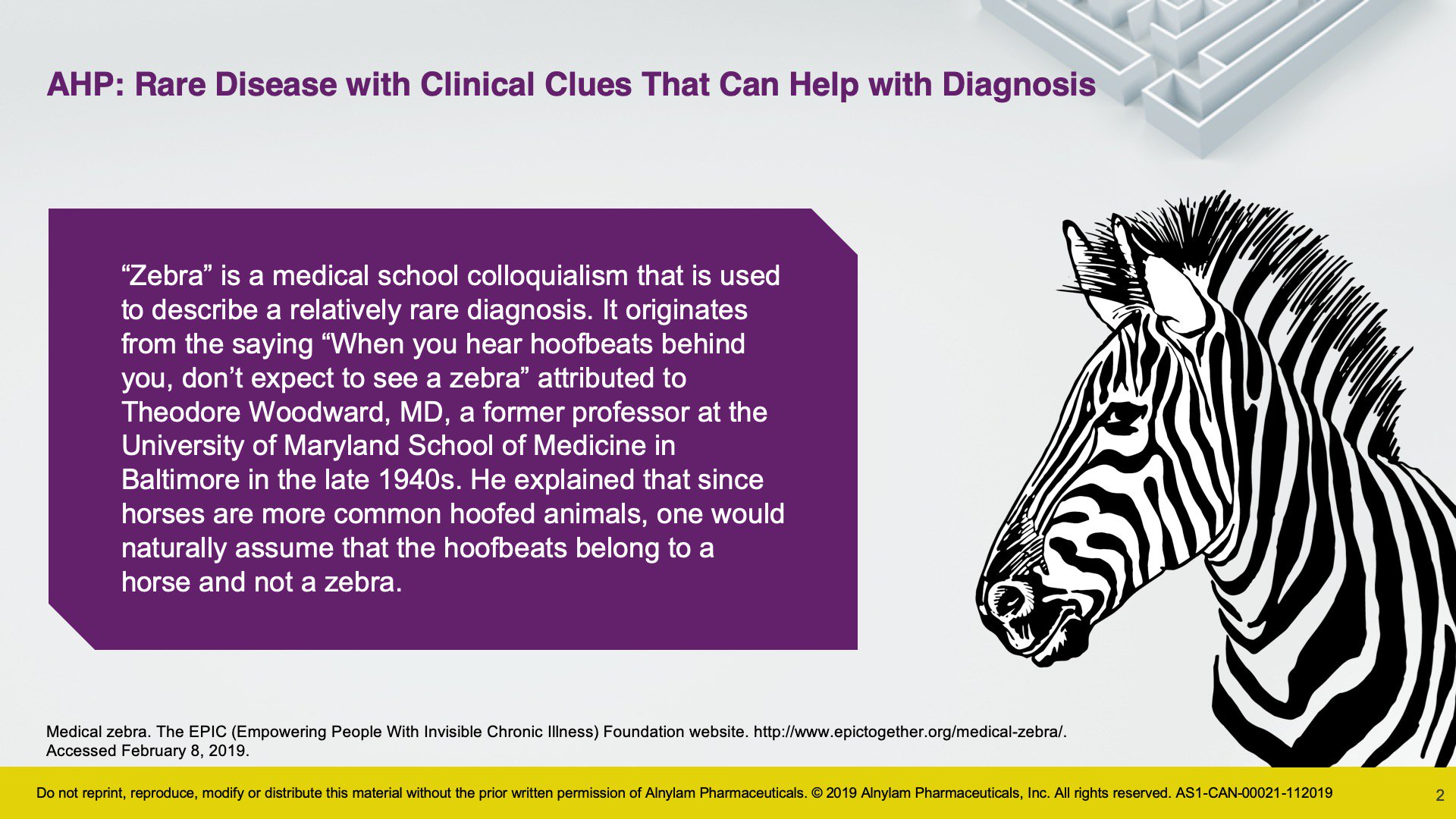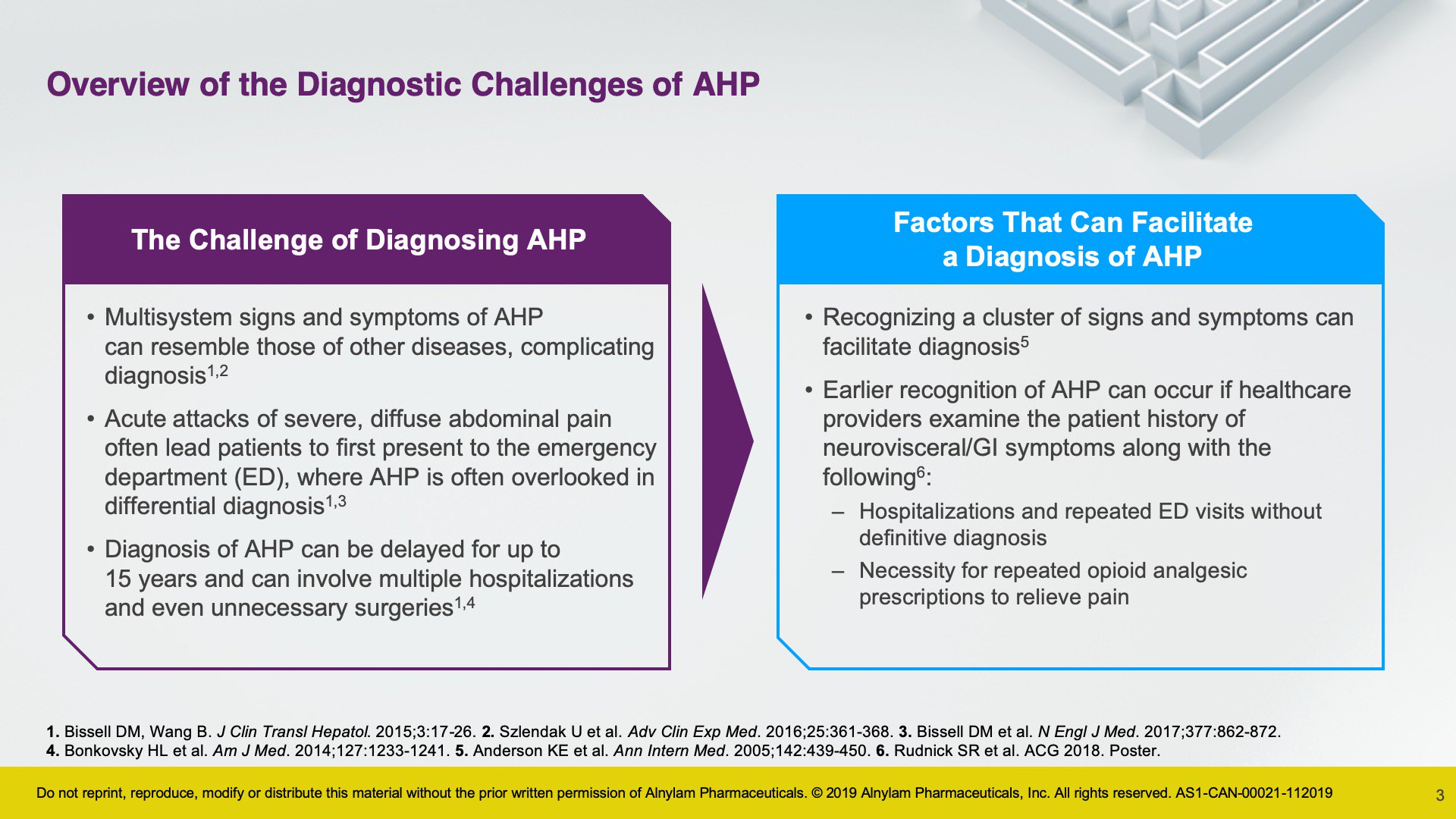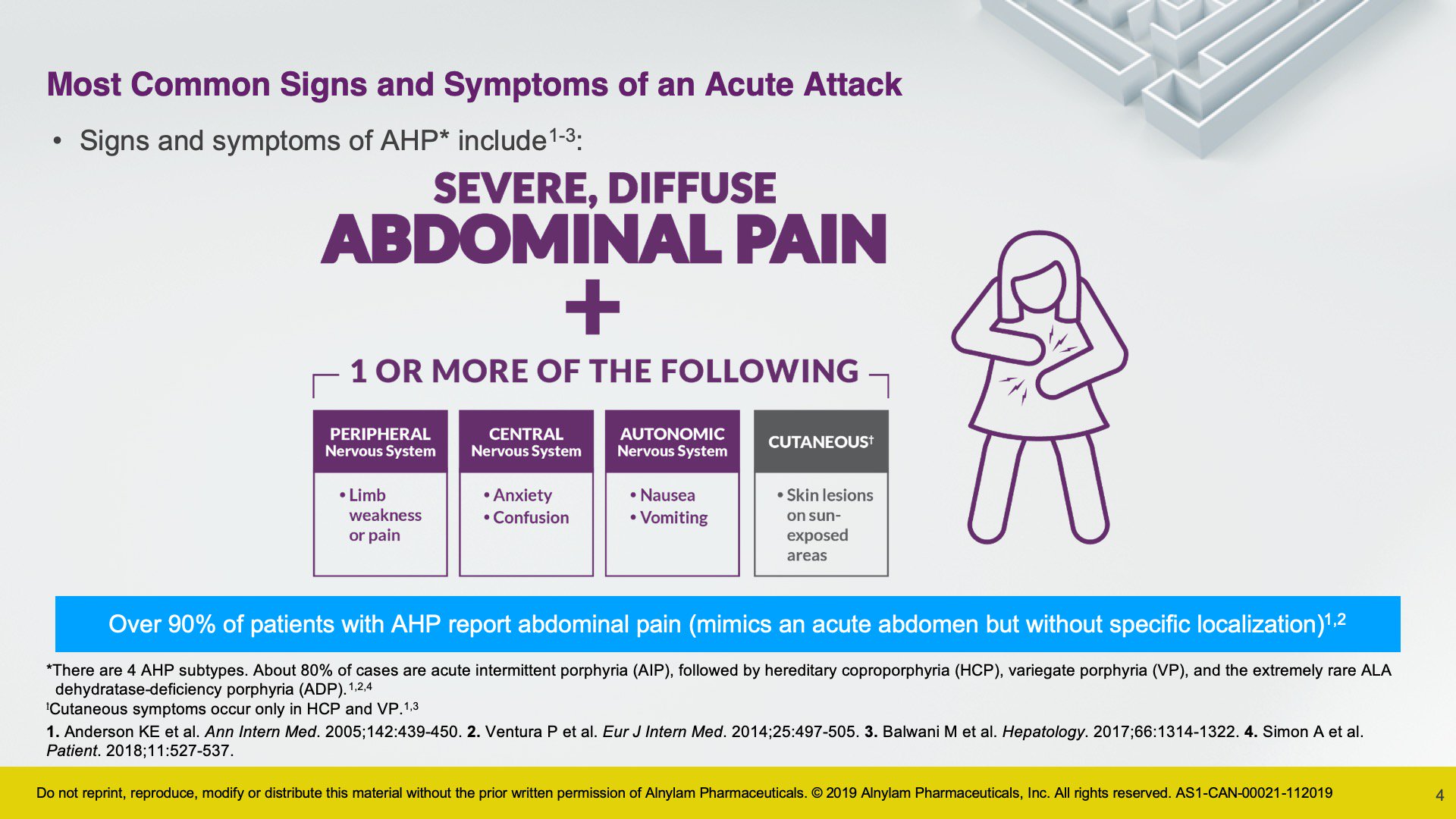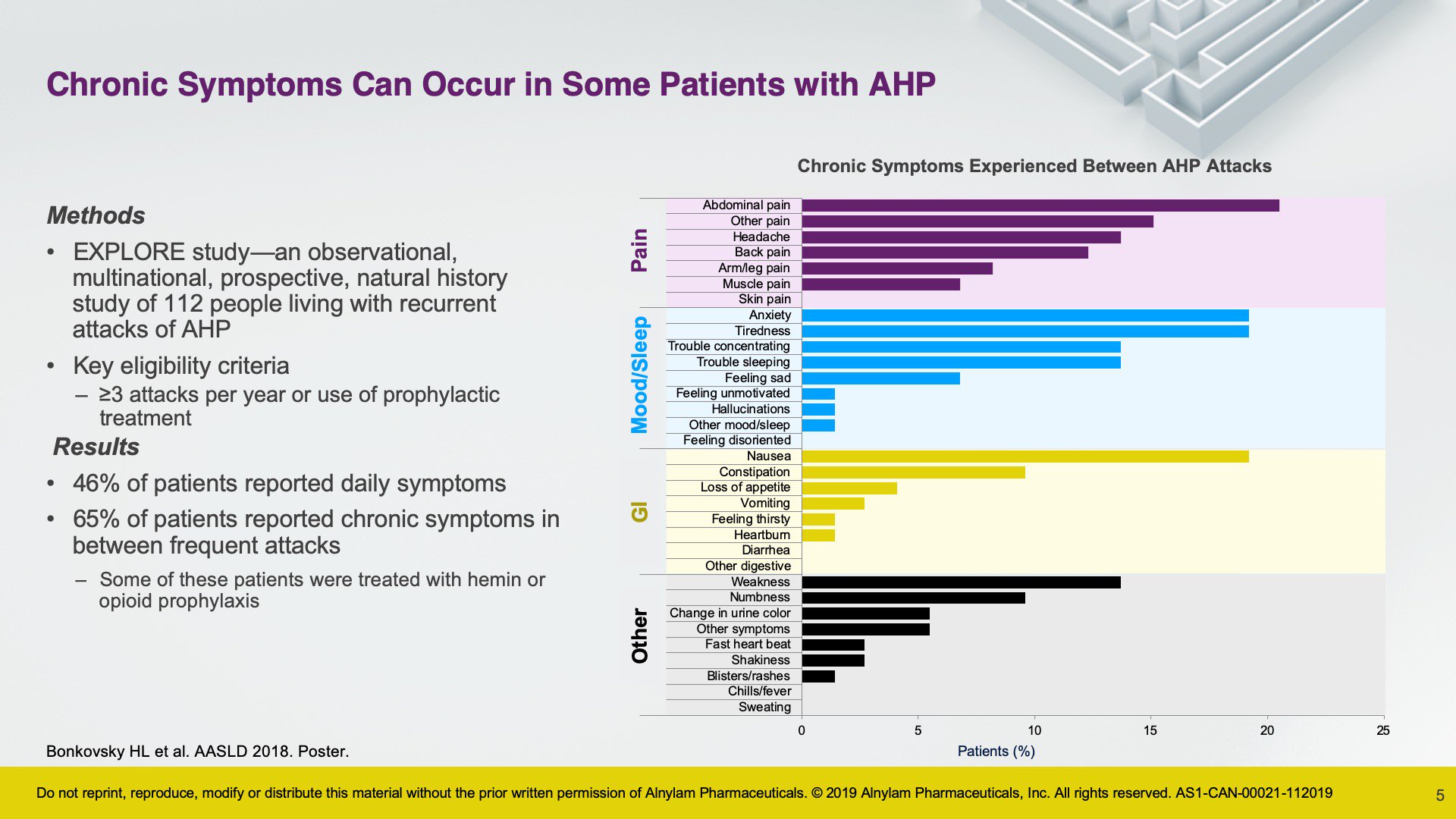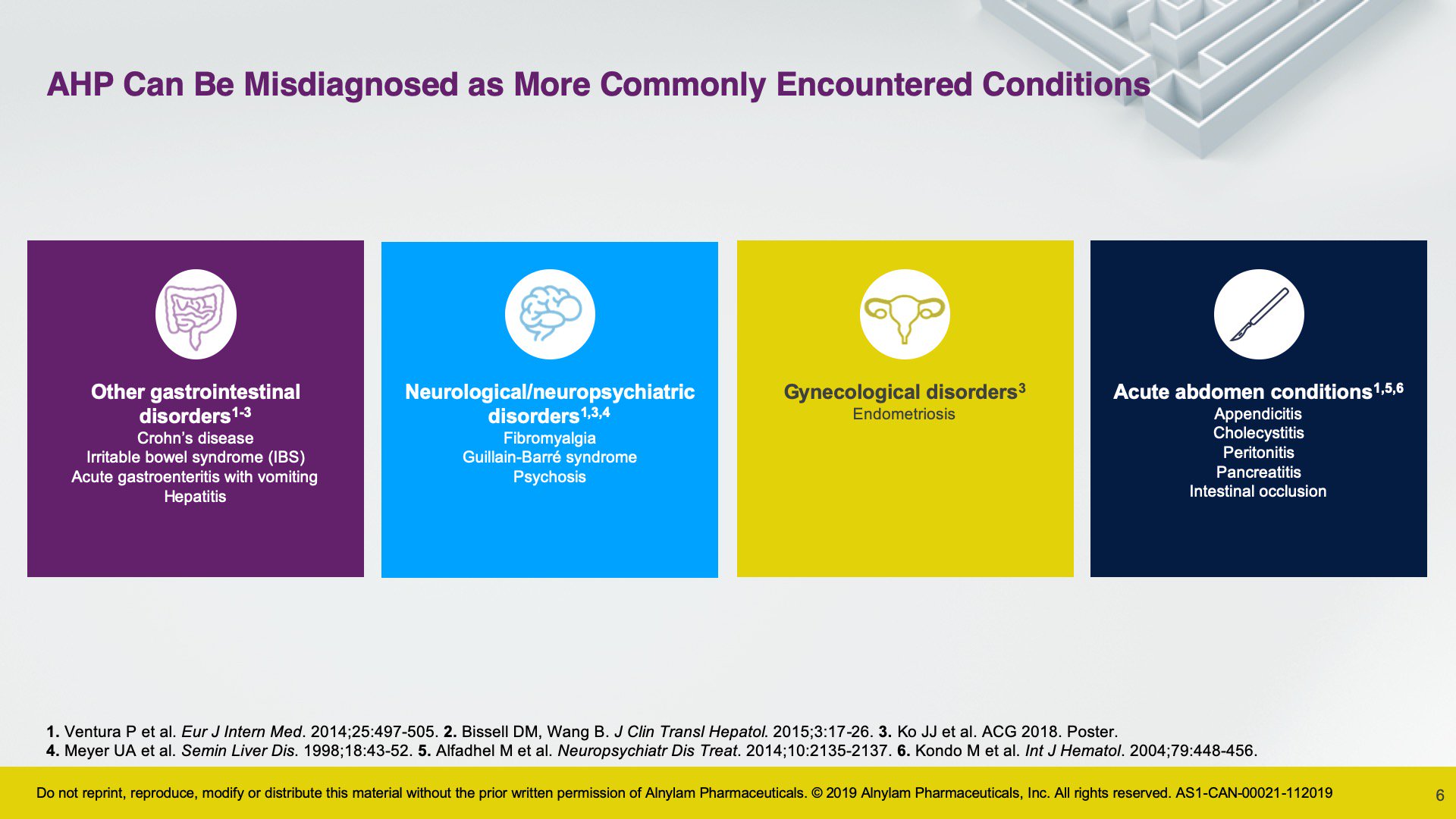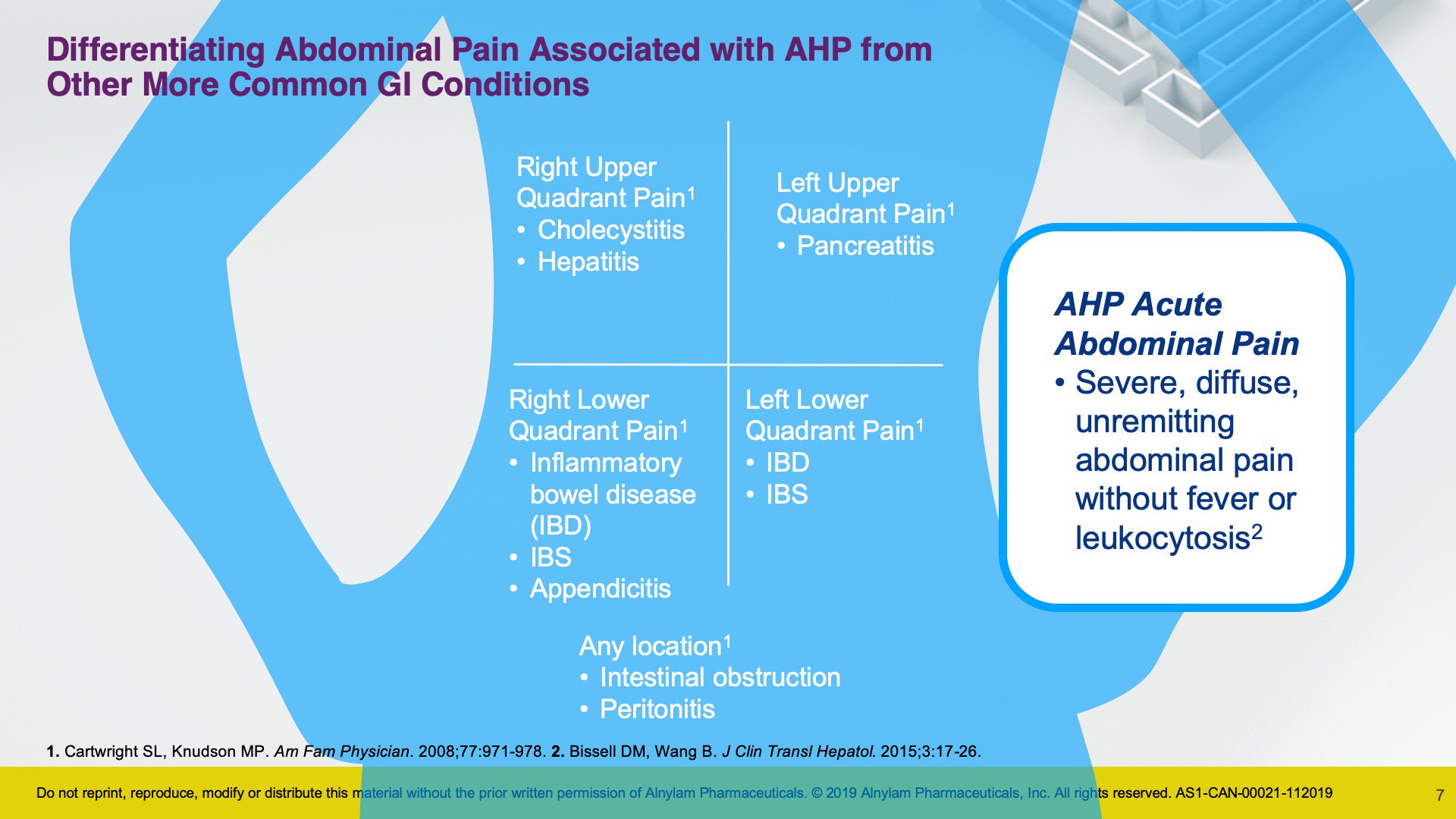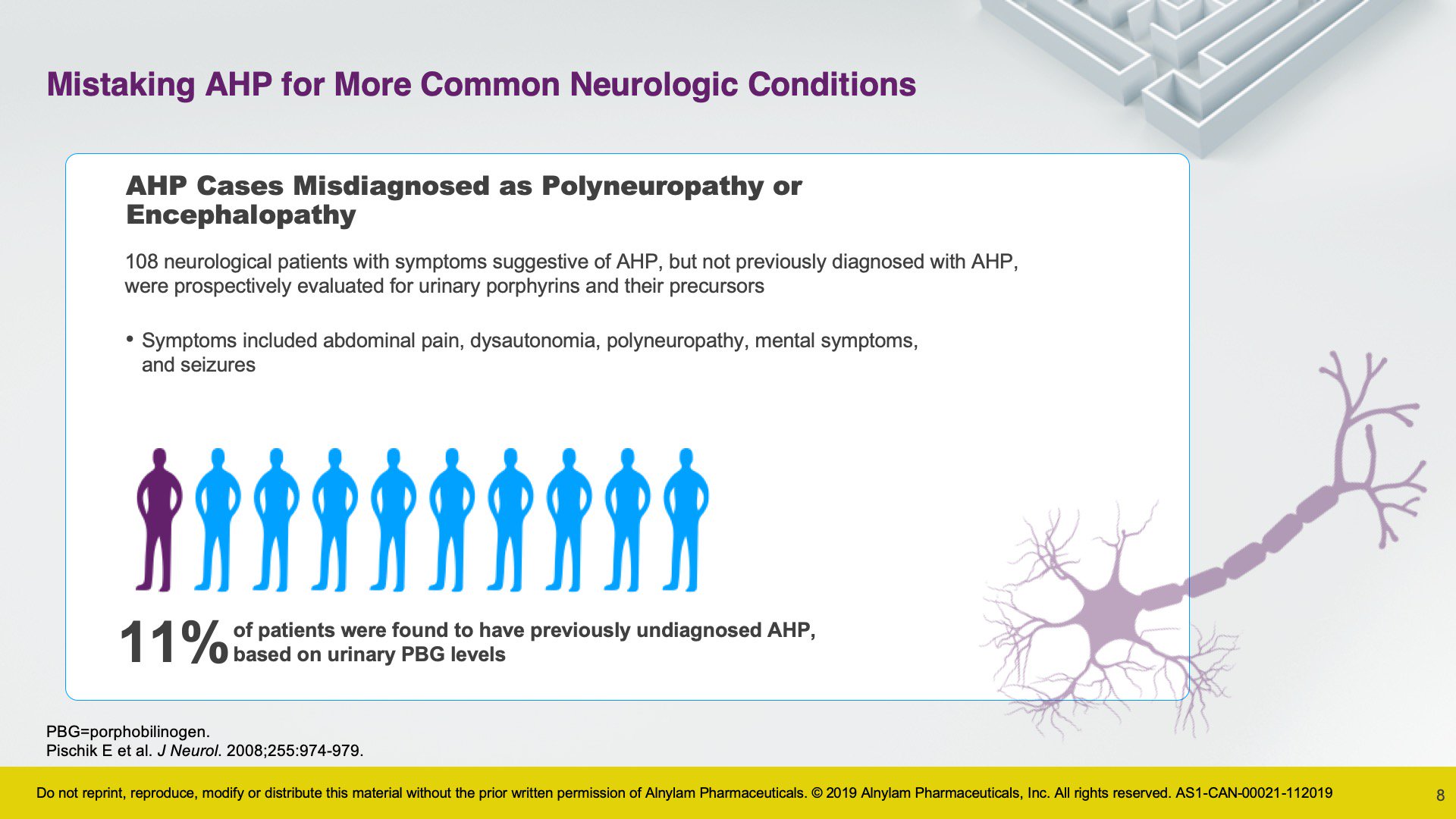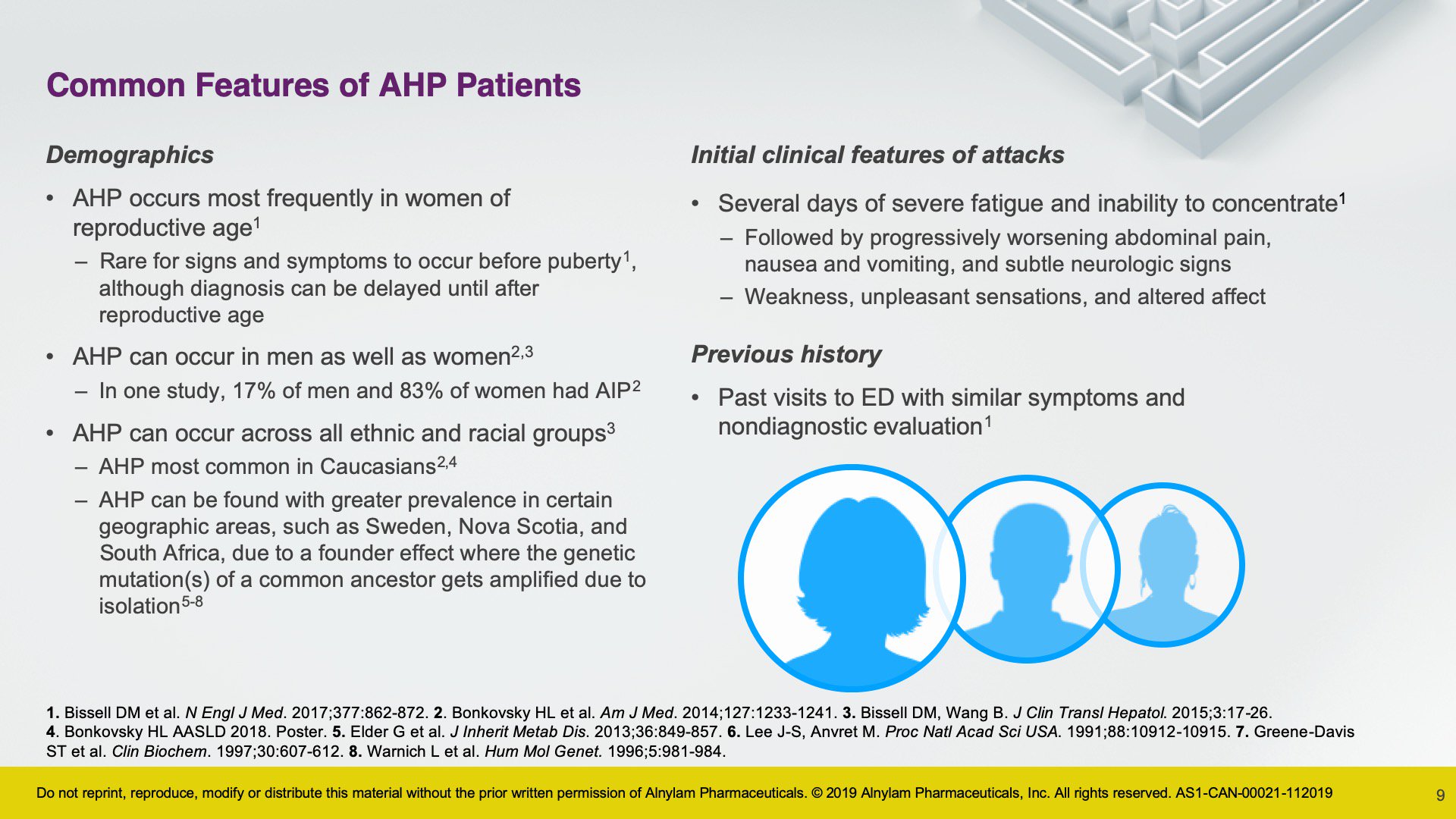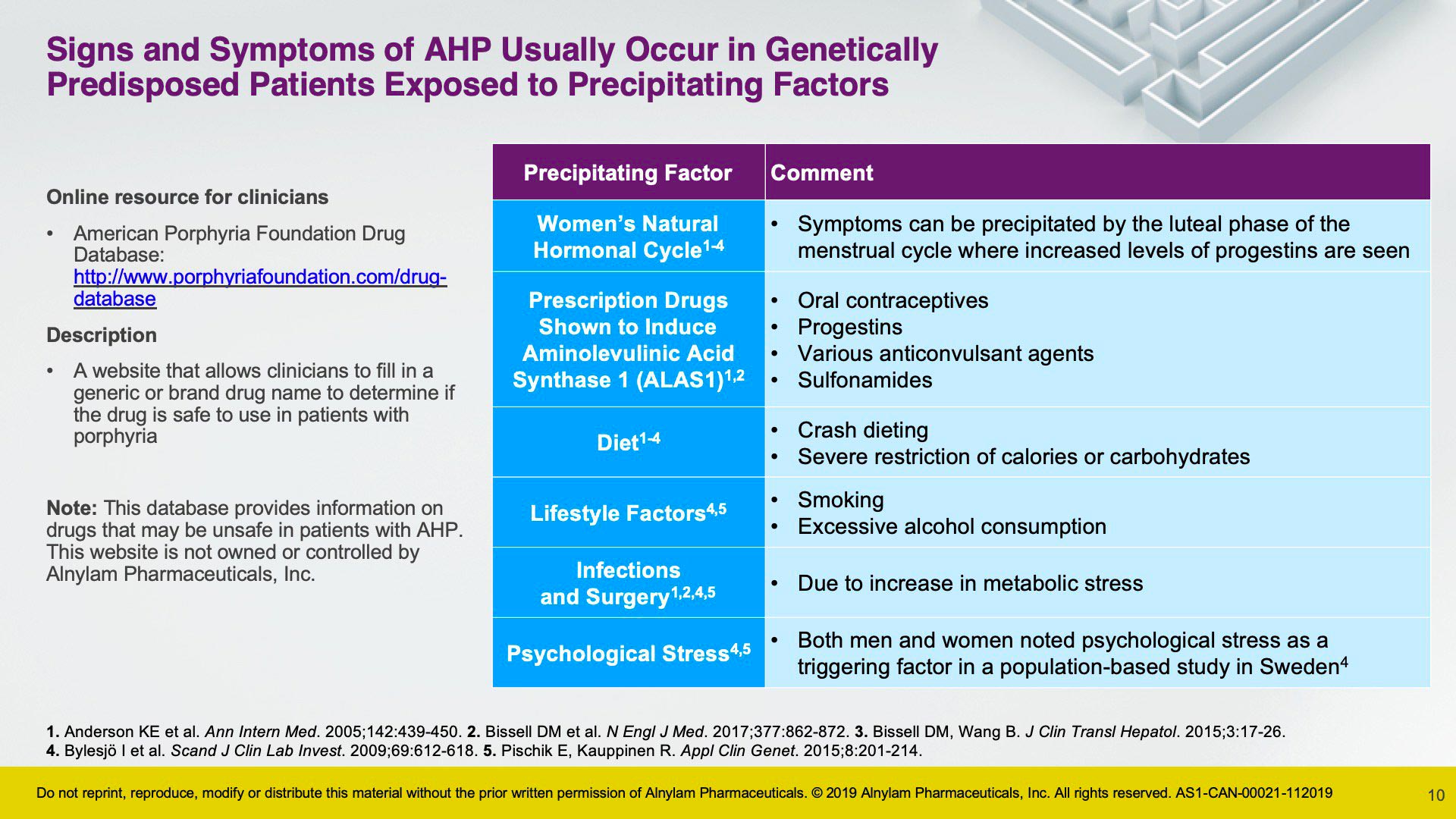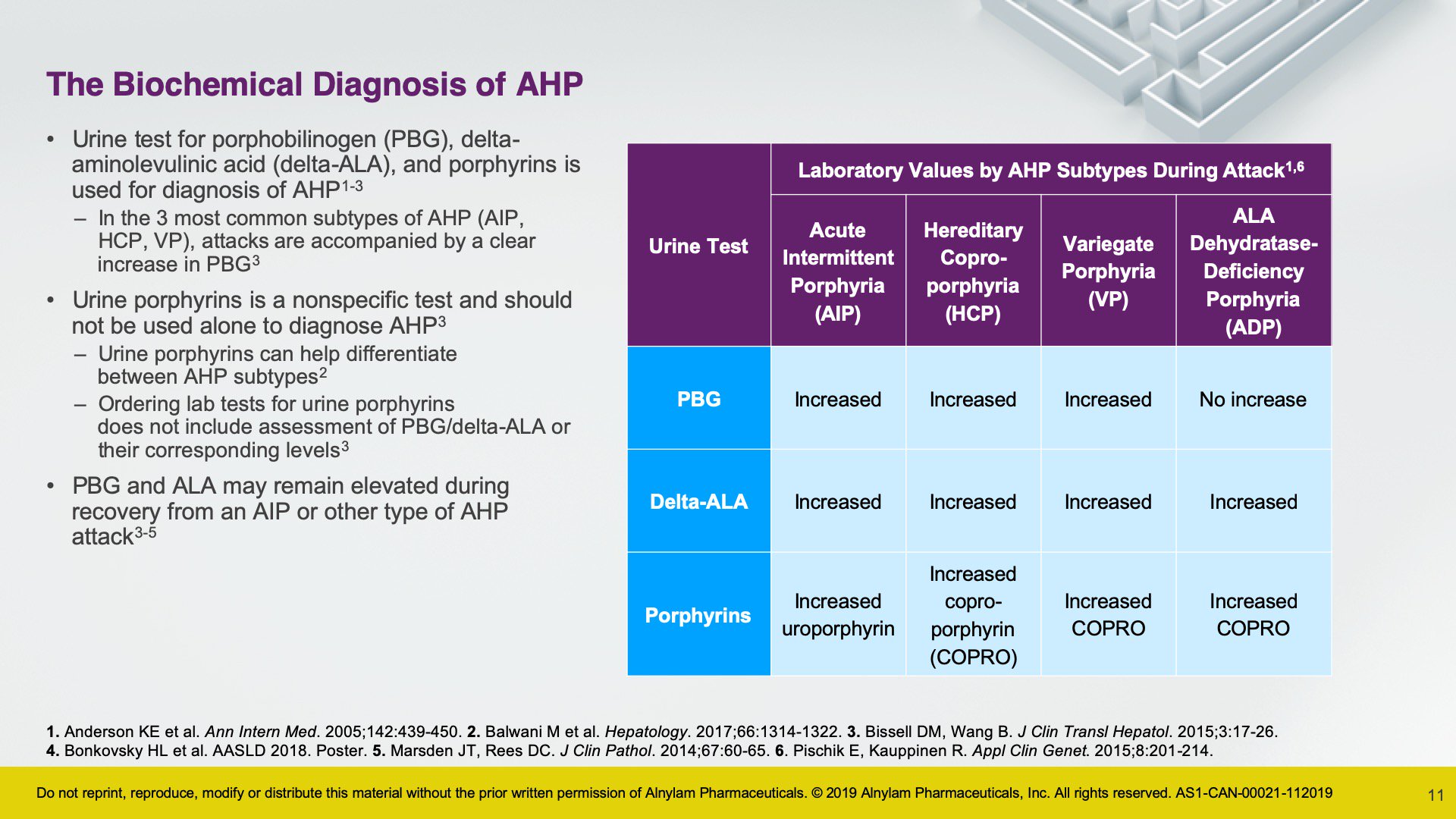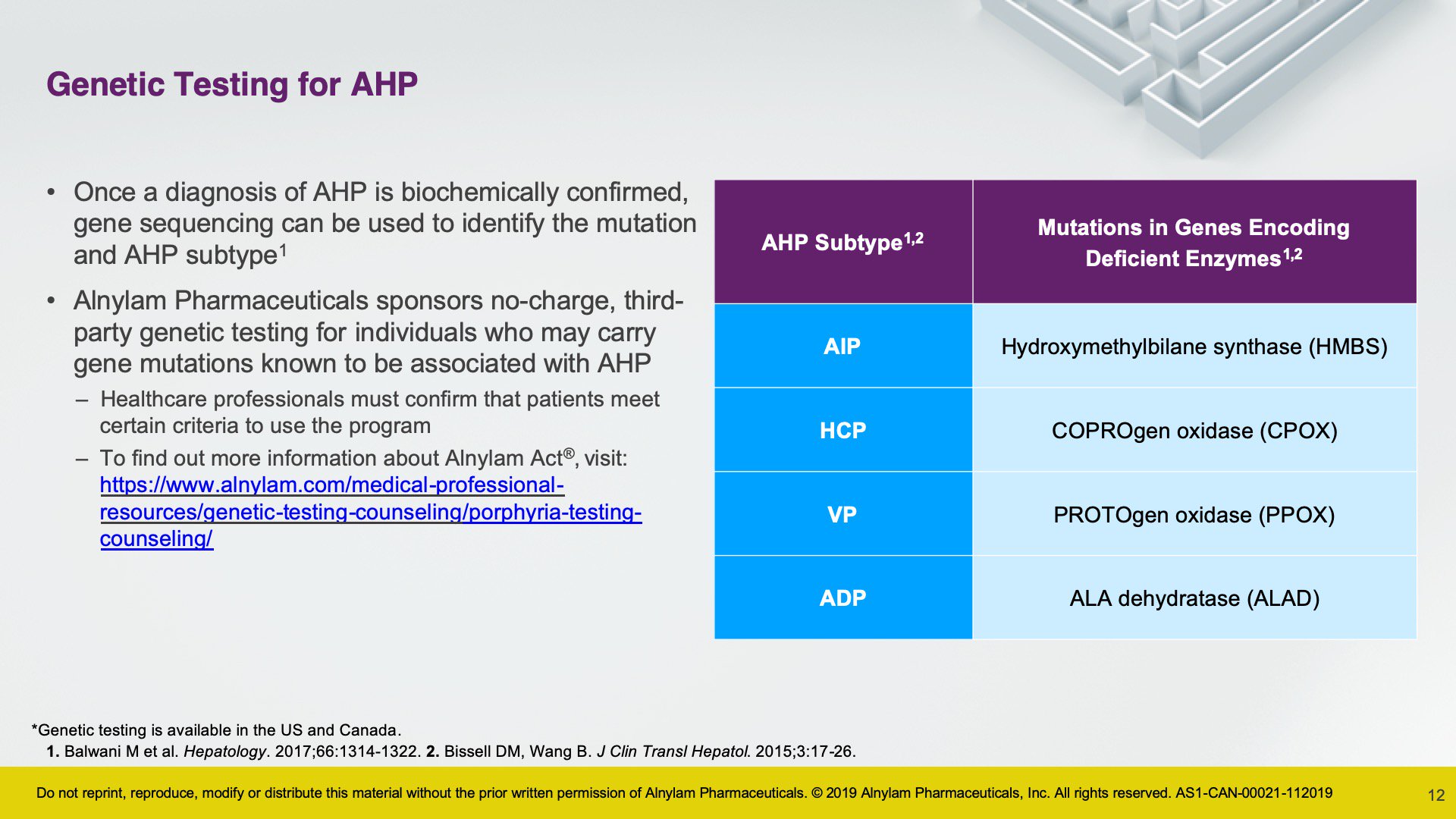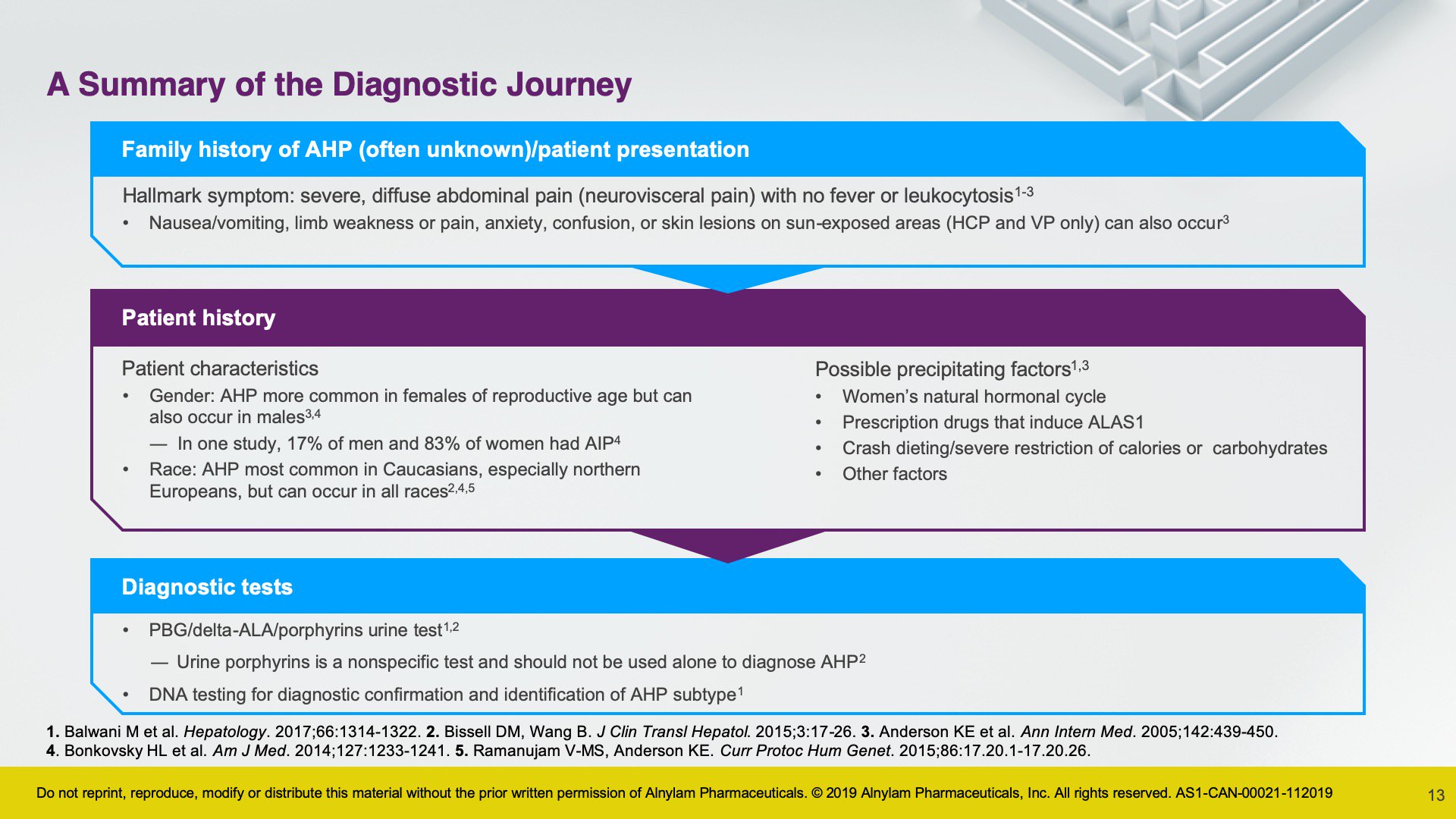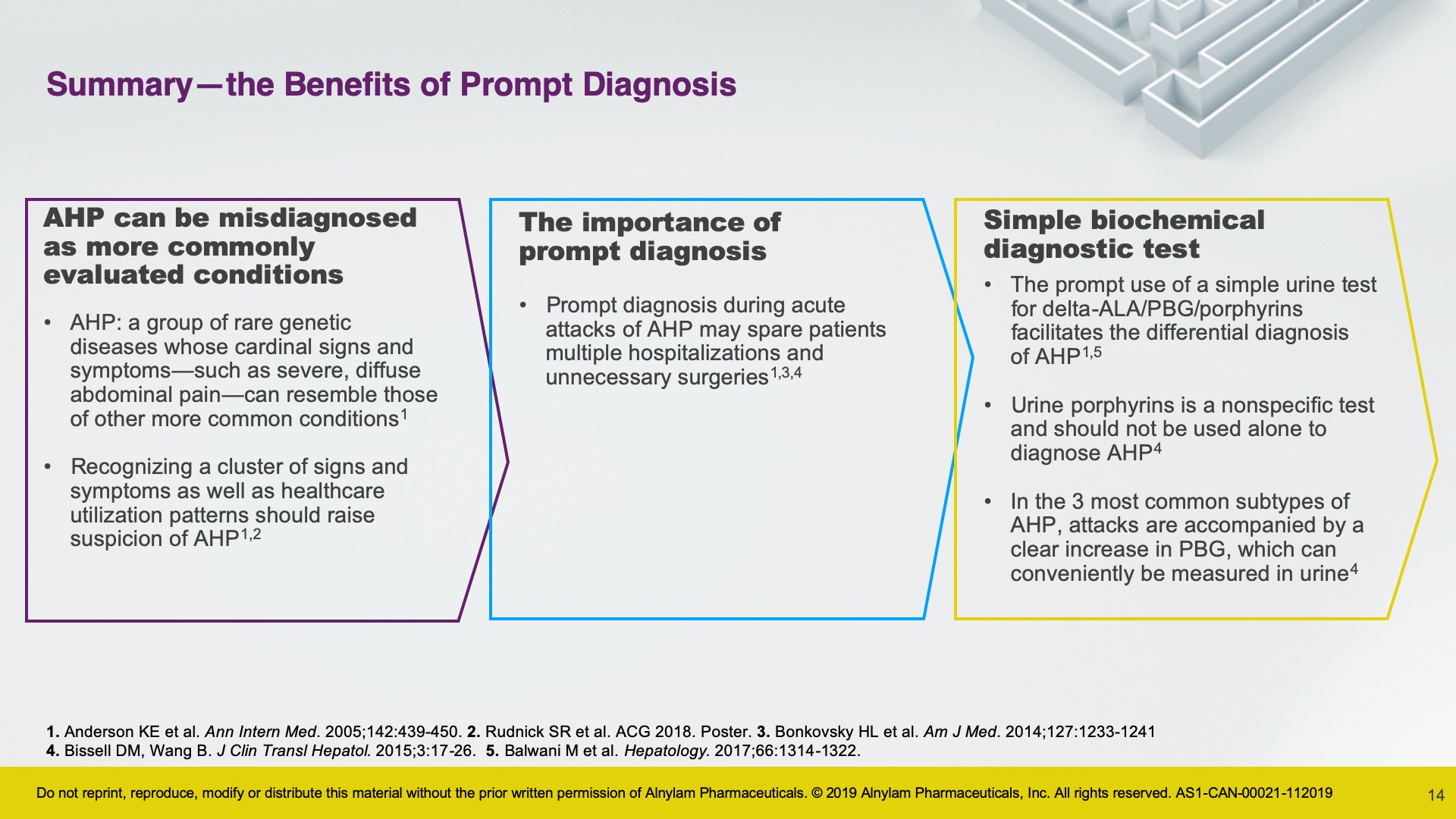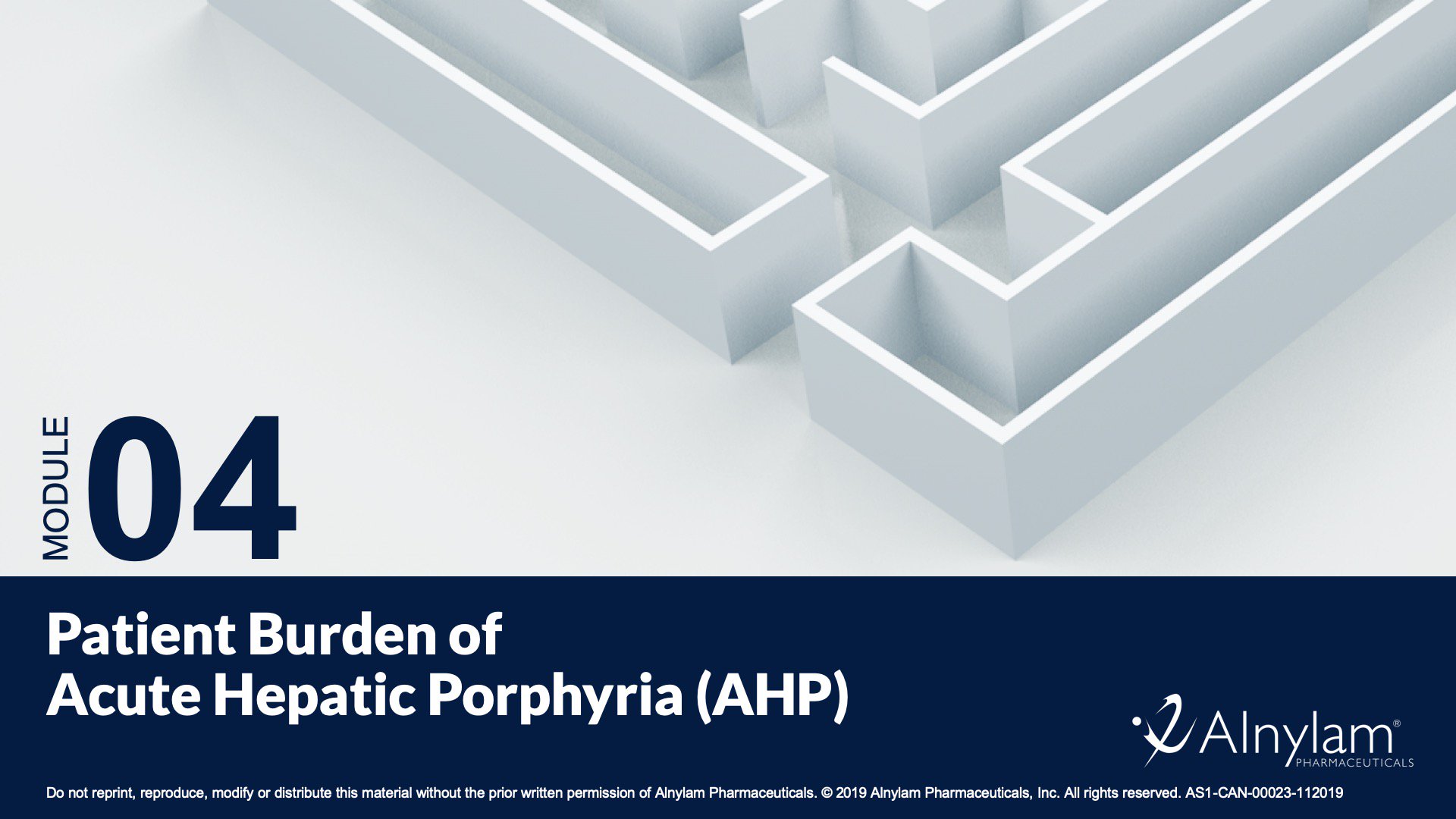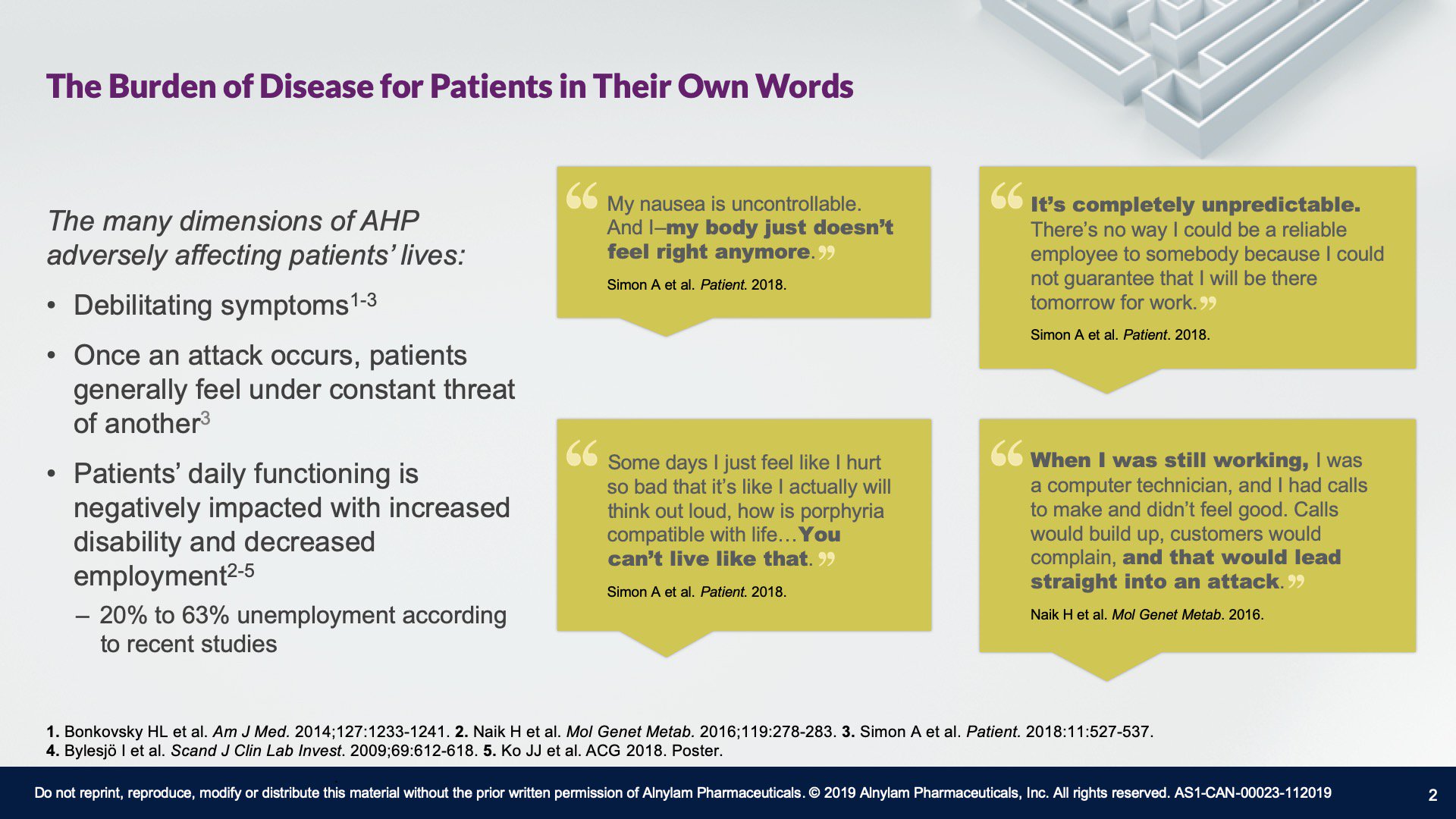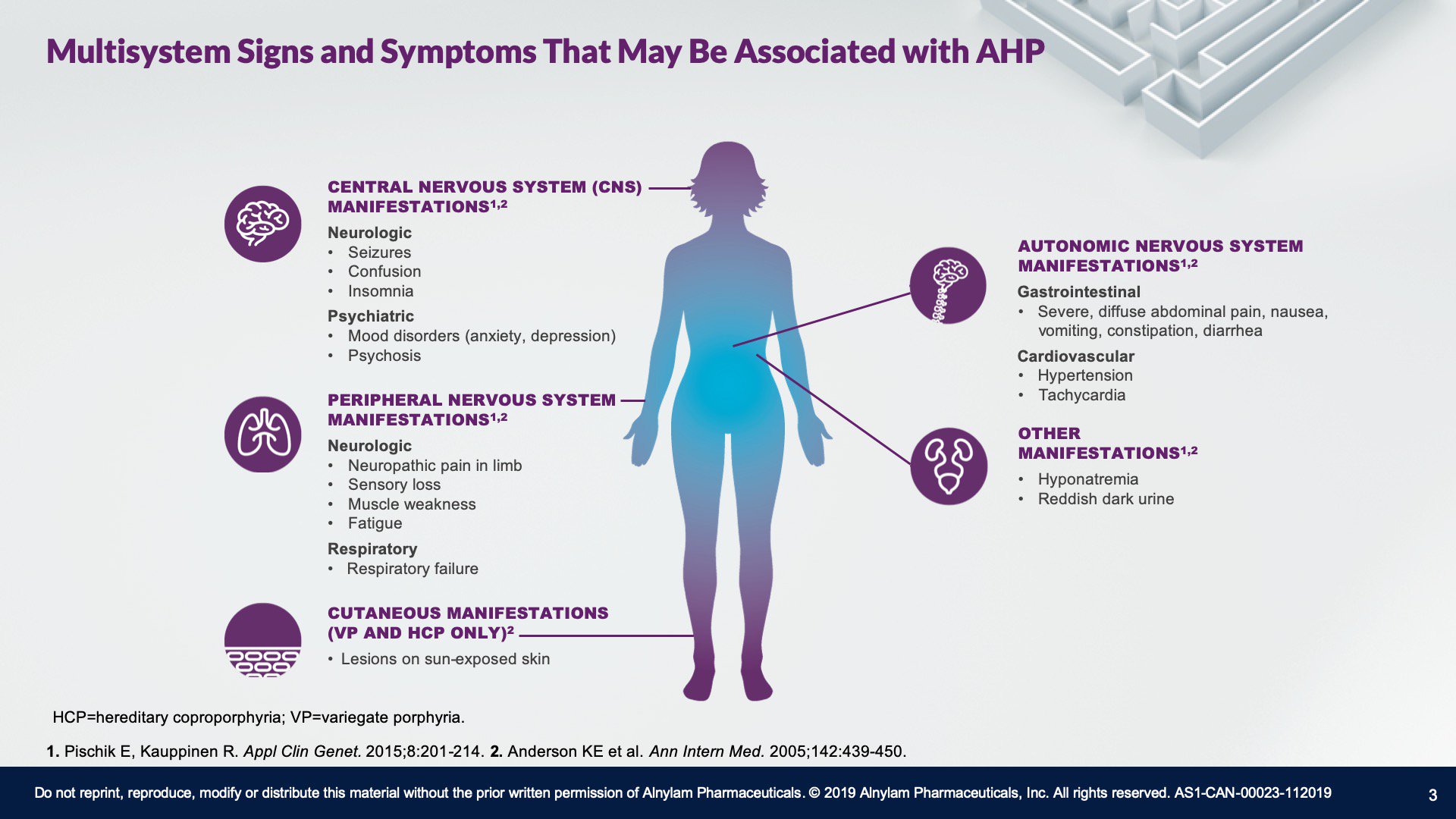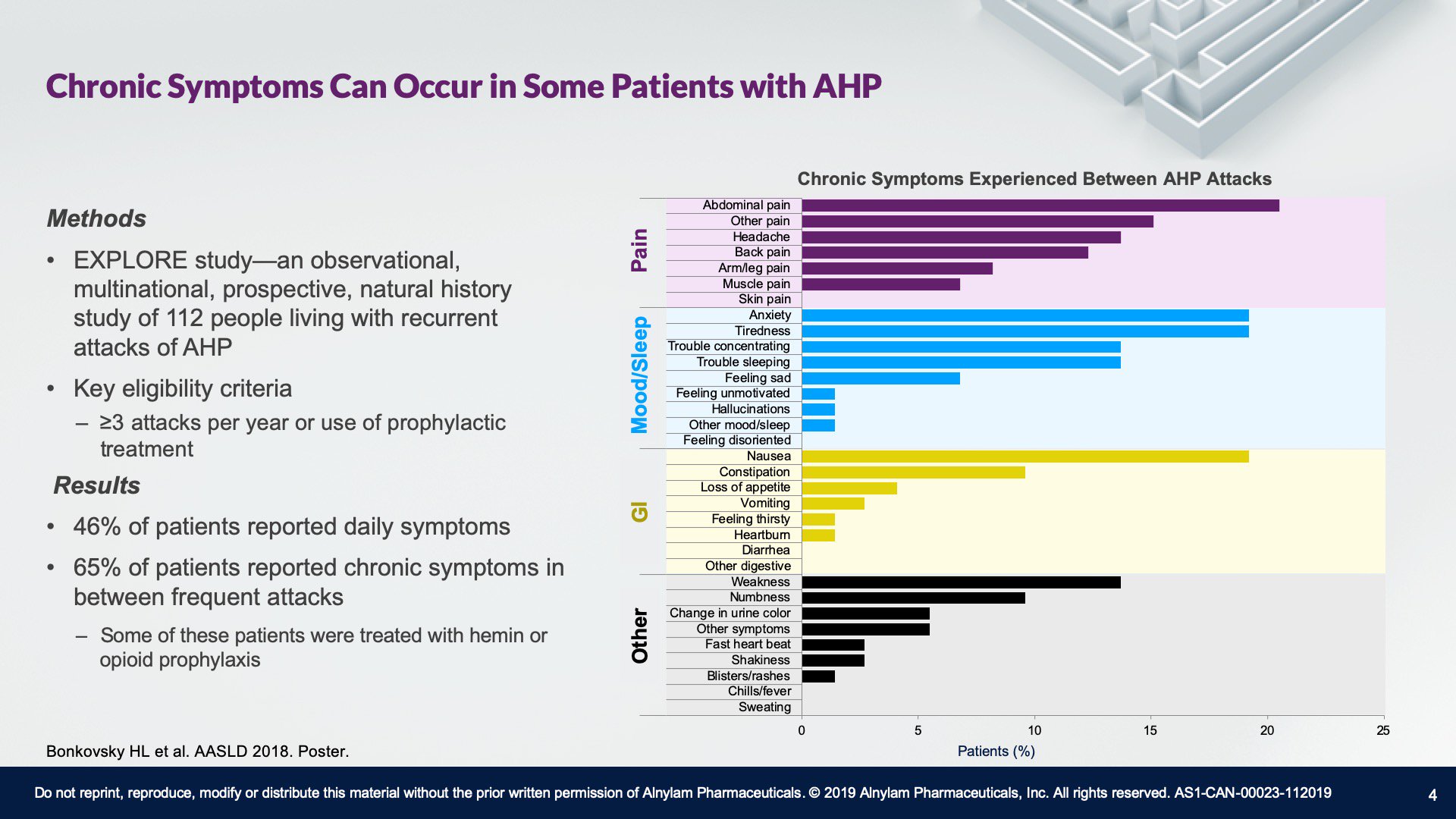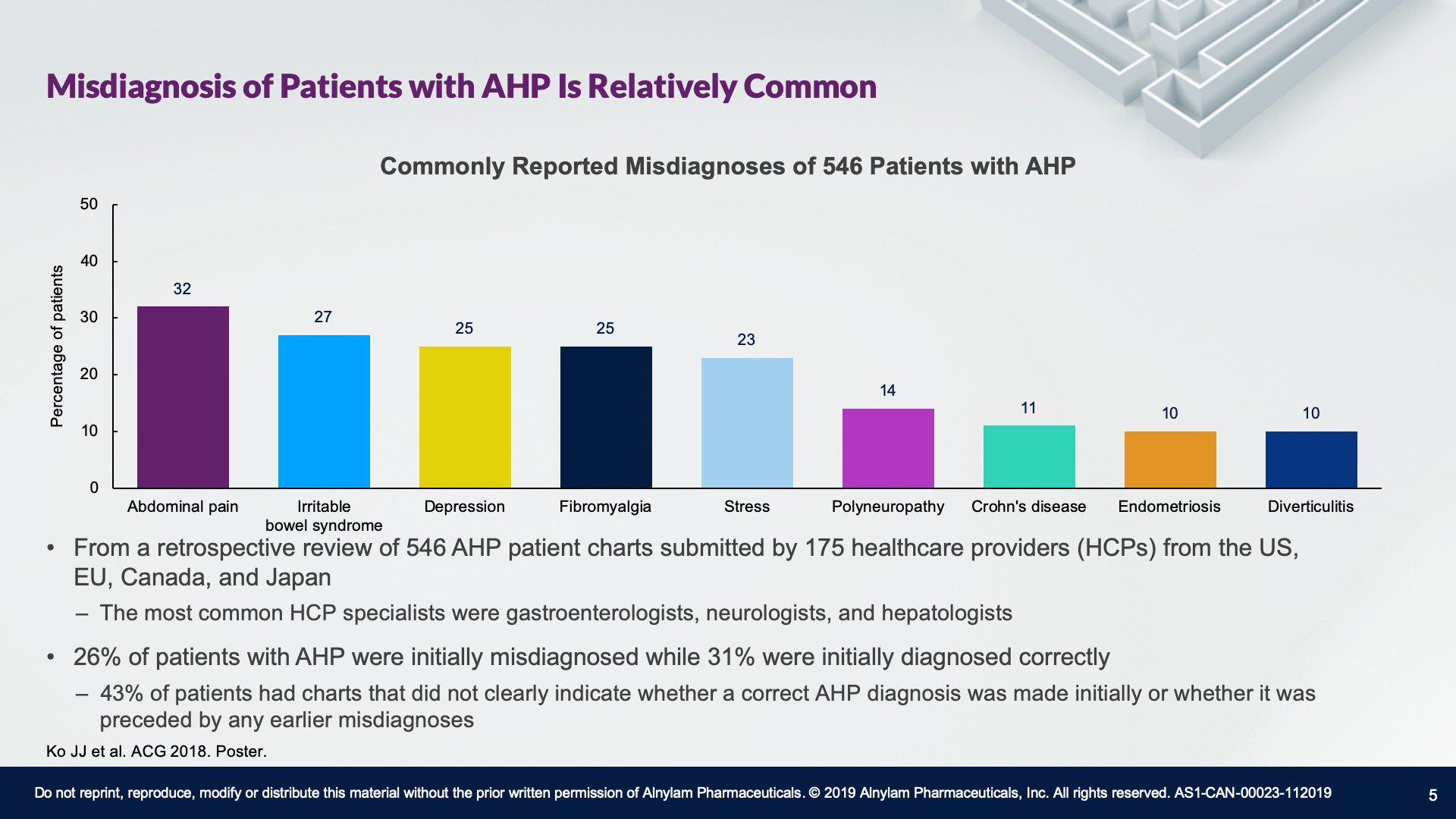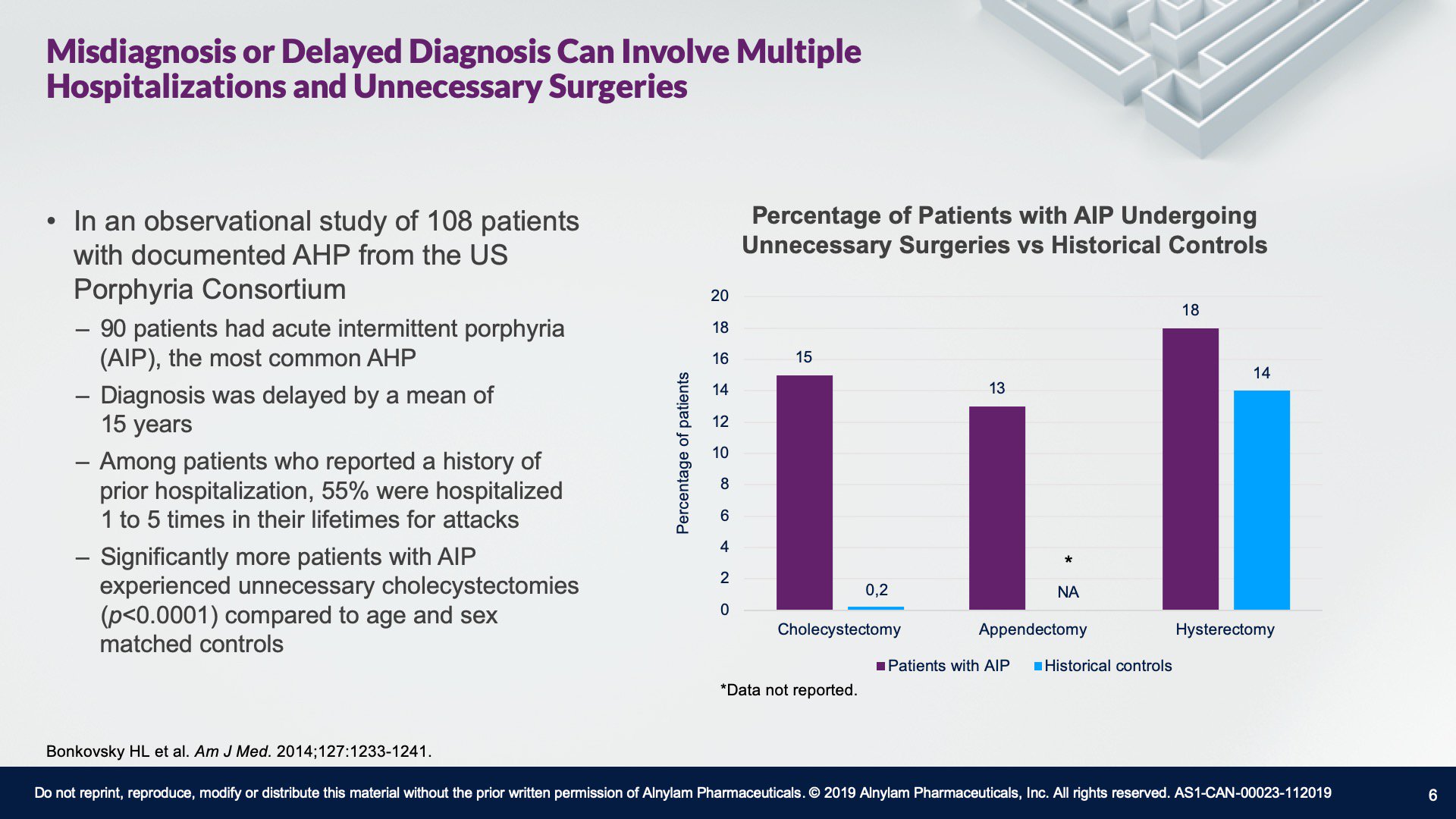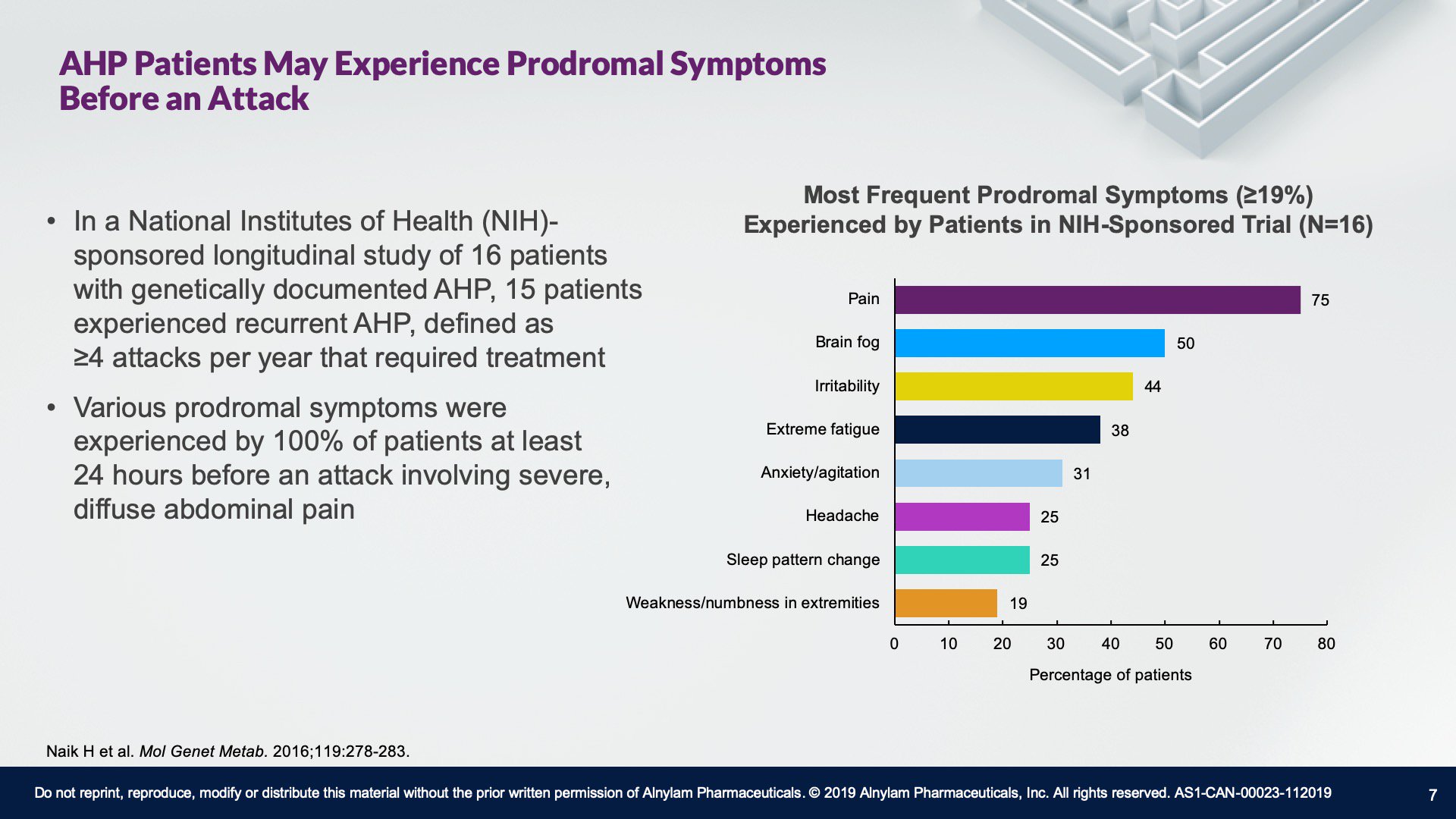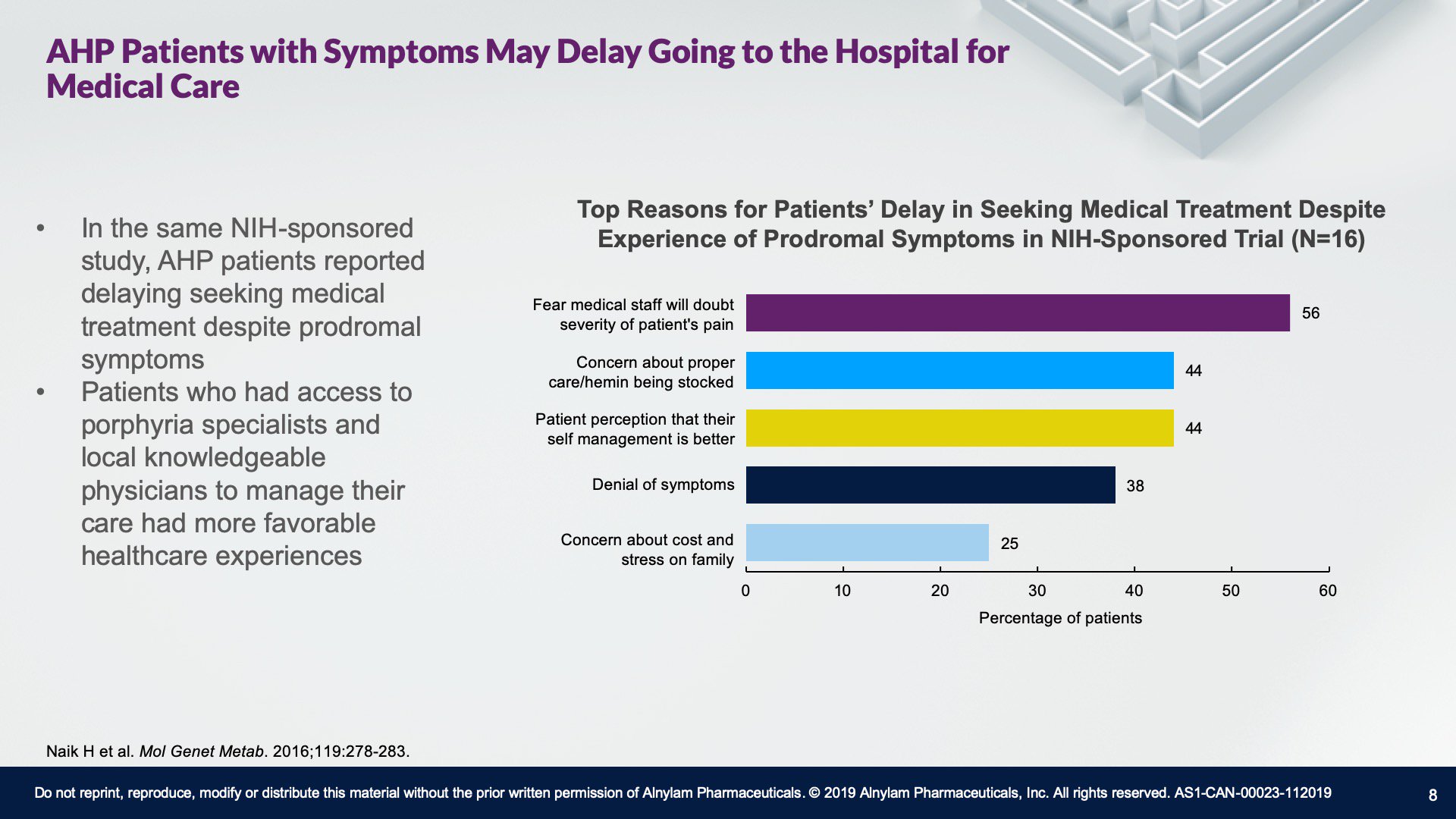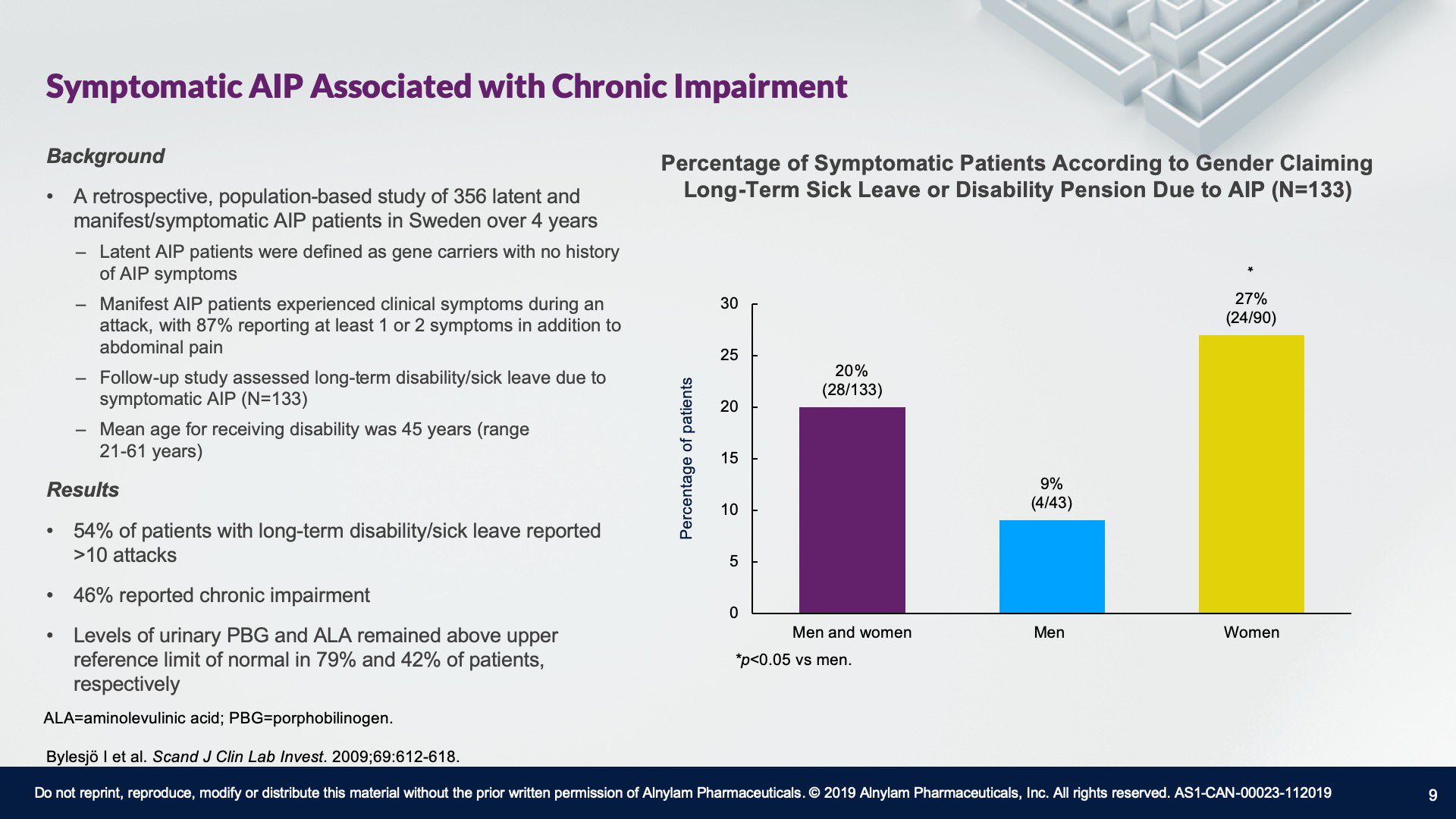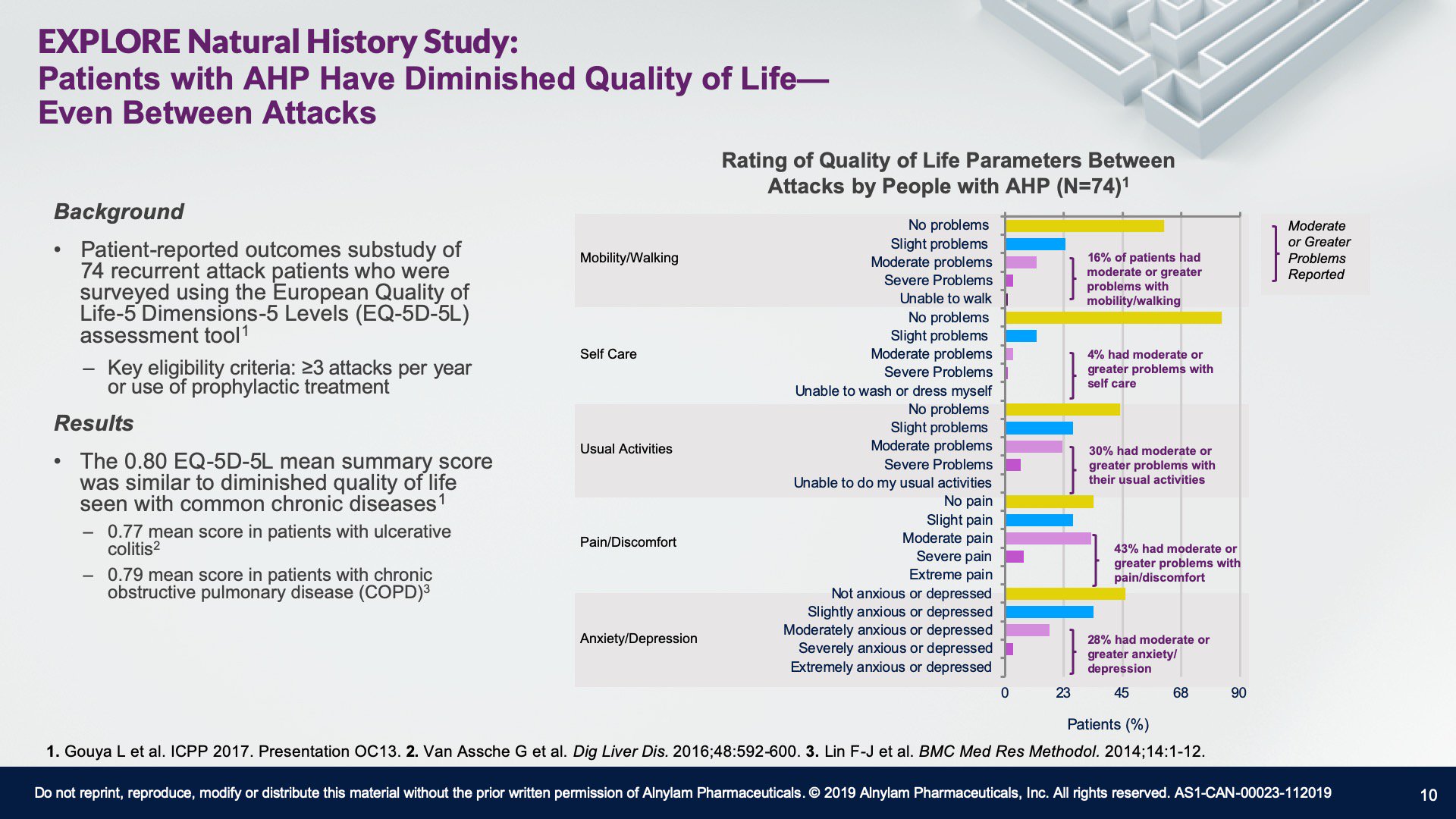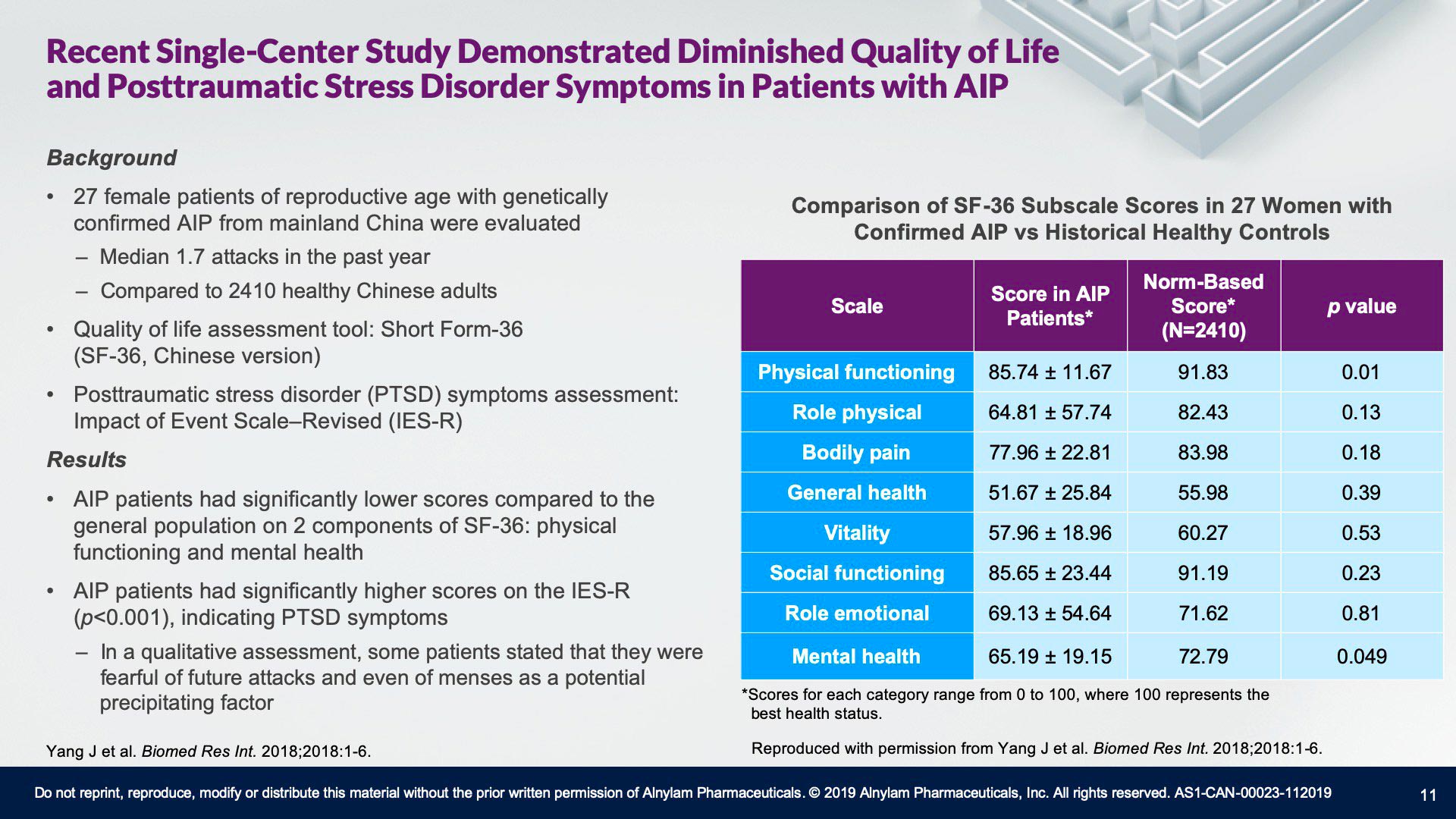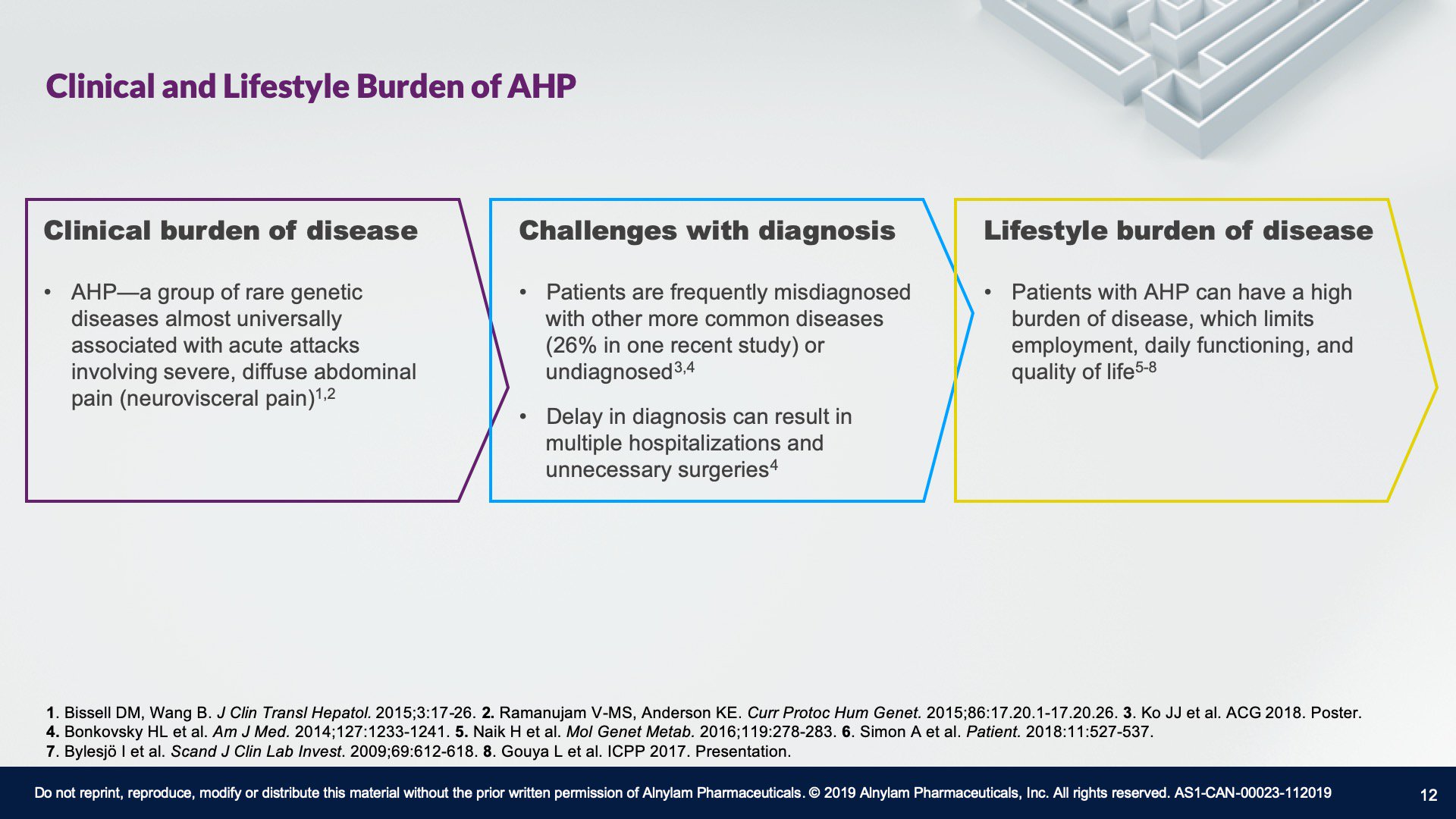AHP Is a Family Of
Rare And Debilitating
Genetic Diseases
Each type of porphyria involves a genetic defect in a heme biosynthesis pathway enzyme. They are classified as the following: acute hepatic porphyria (AHP)—which may present as a sudden neurovisceral acute attack—or photocutaneous porphyria.1-3
Using Major Clinical Manifestations for Classification of 8 Porphyria Subtypes3,4


ADP=aminolevulinic acid dehydratase-deficiency porphyria; AIP=acute intermittent porphyria; ALA=aminolevulinic acid; CEP=congenital erythropoietic porphyria; EPP=erythropoietic protoporphyria; HCP=hereditary coproporphyria; PBG=porphobilinogen; PCT=porphyria cutanea tarda; VP=variegate porphyria; XLDPP=X-linked dominant protoporphyria.
This site is dedicated to discussing AHP. For information about all types of porphyria, including both AHP and photocutaneous porphyria, visit the Canadian Association for Porphyria website.
Causes of AHP
The pathophysiology of porphyria comprises 8 genetic metabolic disorders of the heme biosynthesis pathway. AHP, a subset of porphyria, often presents as a sudden acute attack requiring hospitalization and is triggered by excess ALA and PBG.2-5
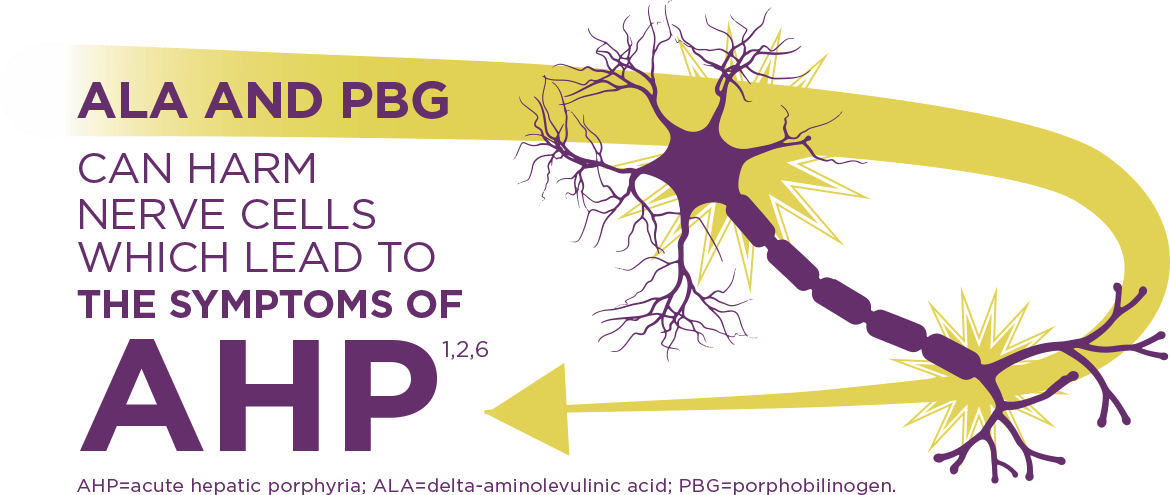
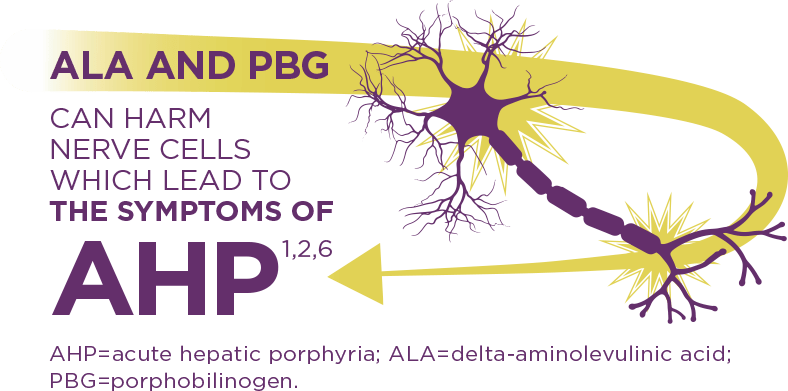
AHP is caused by enzymatic defects that result in accumulation in the liver of neurotoxic intermediates—aminolevulinic acid (ALA) and porphobilinogen (PBG). Upregulation of ALAS1 (aminolevulinate acid synthase 1) is a central pathophysiologic mechanism underlying AHP, and leads to this accumulation of neurotoxic intermediates. ALA and PBG then enter the circulatory system and are thought to cause neurologic lesions leading to dysfunction across the autonomic, central, and peripheral nervous systems. Dysfunction in these systems can cause patients to have severe, diffuse abdominal pain plus one or more of the following symptoms: anxiety, confusion, nausea, vomiting, limb weakness or pain. This can potentially result in irreversible neuropathies and long-term disease complications such as kidney disease and hepatocellular carcinoma. Elevated PBG is important as a highly specific diagnostic marker. ALA is believed to be the primary neurotoxin responsible for causing acute attacks, ongoing symptoms between attacks, and prolonged or potentially permanent neuropathy in AHP. Acute attacks generally last 3 to 7 days, but the recovery period can be long and extend into residual chronic symptoms.1-9
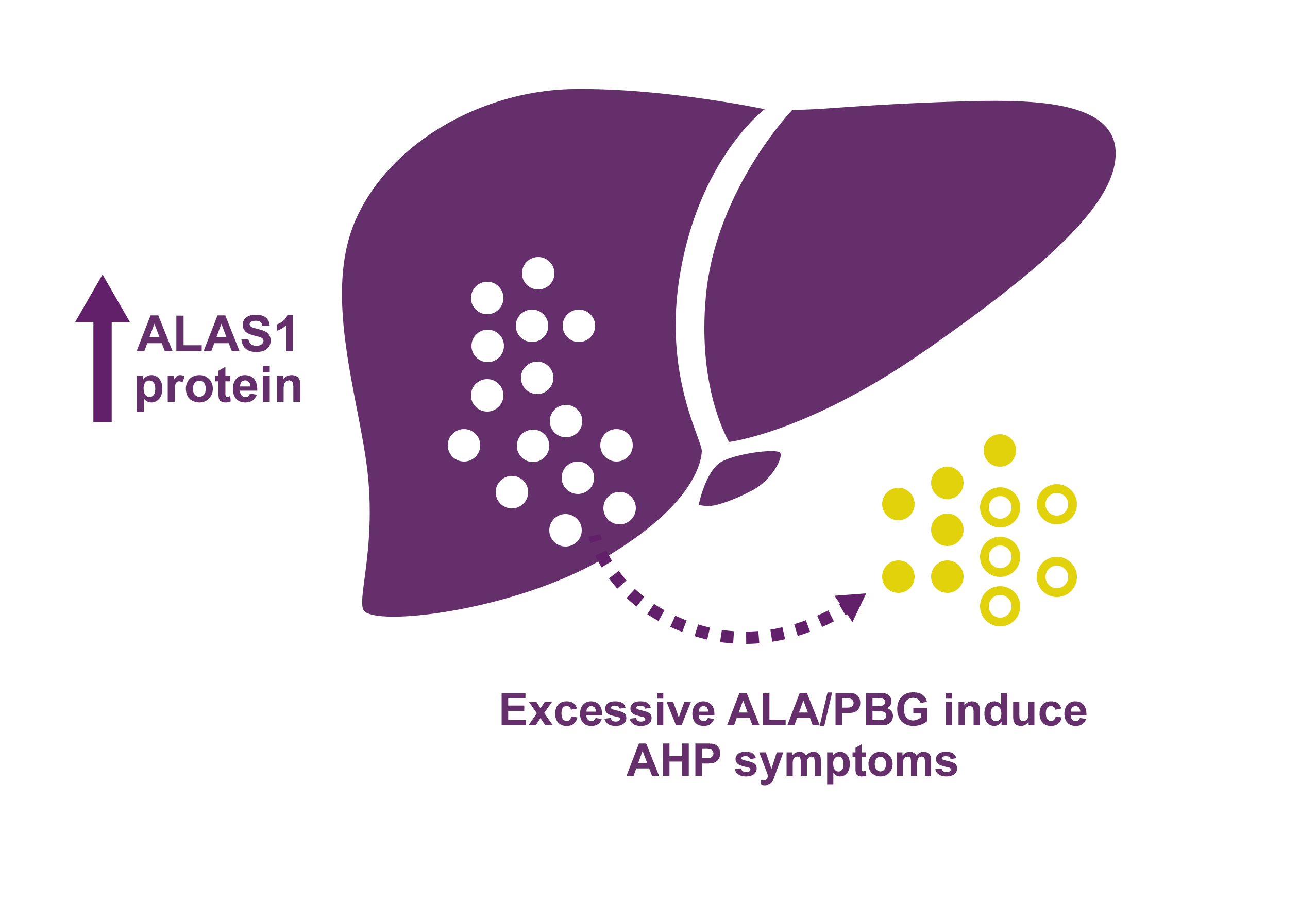
AHP Consists of 4 Subtypes
There are 4 AHP subtypes, which stem from different enzyme deficiencies in the heme biosynthesis pathway in the liver. About 80% of cases are acute intermittent porphyria (AIP), followed by variegate porphyria (VP), hereditary coproporphyria (HCP), and the extremely rare ALA dehydratase-deficiency porphyria (ADP). The prevalence of AIP may be under-reported due to estimates based on patients with symptomatic disease only, rather than an enzyme mutation.2,4,8,10,11
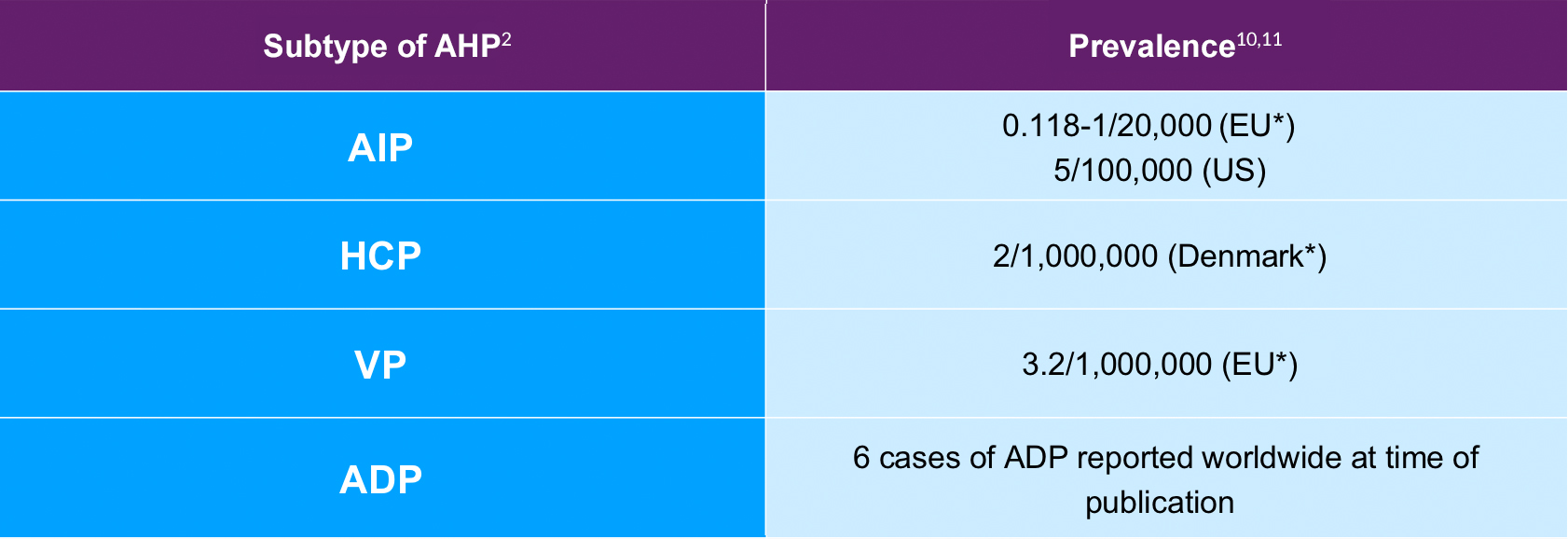
*Prevalence data from these particular countries were cited due to ongoing research and relatively high prevalence.
Epidemiology of AHP
AHP affects people of all races, with the highest prevalence in Caucasians. The majority of cases occur in women of reproductive age, with most attacks occurring between the ages of 15 and 45. Importantly, the risk of long-term disease consequences, such as porphyria-related kidney disease or hepatocellular carcinoma, remain after menopause. Some patients experience debilitating and even life-threatening attacks.2-4,10-16
The majority of cases occur in women12†

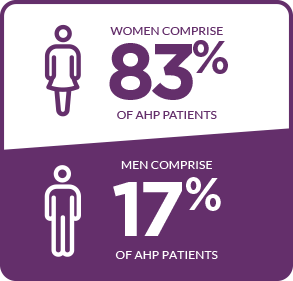
†In one study including 108 patients.
